
Can You Sail a Catamaran Around The World?

Last Updated by
Daniel Wade
August 30, 2022
Many people have sailed around the world in traditional monohull sailboats, but has anybody tried with a catamaran?
Sailing around the world is hazardous and trying at times, so it pays to have a sailboat that's built for the job. Sailors place a premium on safety and comfort—so where do catamarans fit into the equation?
Yes, you can sail a catamaran around the world. In fact, full-size catamarans are some of the best circumnavigation sailboats on the market. They offer superior comfort, safety, storage space, and speed when compared to monohulls.
Catamarans have become increasingly popular since the 1990s, and they're seen in ports all over the world. If you consider their handling characteristics, it's no wonder they're so popular for circumnavigation. But what are the things that make cruising catamarans so good for long ocean voyages?
We sourced the information used in this article from sailboat design guides and the online sailing community. We also considered the input of several experienced catamaran captains, most of which have embarked on circumnavigations in catamarans and monohulls.
Table of contents

Can You Circumnavigate in a Catamaran?
You can absolutely sail a catamaran around the world! In fact, catamarans are preferred by many sailors for long ocean voyages, and dozens circumnavigate in all seasons each year. The number of catamarans continues to rise every year, and some of the world’s most influential long-distance sailors have switched to them from monohulls.
There are many benefits to choosing a catamaran for a circumnavigation, and we’ll cover some of those soon. But first, here’s what makes a catamaran suitable for an around the world sailing trip.
What Kind of Catamaran Can Sail Around the World?
Not all catamarans are ideal for long ocean voyages, but the vast majority above 25 feet in length are. The kind of vessel that's suitable for a long ocean voyage is called a cruising catamaran.
Cruising catamarans have a number of defining characteristics that make them ideal for Sailing around the world. Here are a few of them.
Cruising catamarans have extensive cabinet space. Smaller catamarans that aren't designed for large ocean voyages aren't designed for comfort. Cruising catamarans have between two and four staterooms, along with a large covered cockpit and standing headroom throughout.
High Freeboard
Cruising catamarans have a high freeboard, which means the decks are relatively high above the water. They also have a shallow draft, as a catamaran has no need for a centerboard, fin keel, or bulb keel.
Catamarans are not as long as monohulls relative to their capabilities. A 35 or 40-foot catamaran has much more interior space than an equivalently-sized monohull. Catamarans split their living quarters between the two hulls and include an additional spacious covered cockpit above.
Cruising catamarans range in size from 30 feet to 60 feet in length, and they typically measure around 40 to 50 feet from stem to stern. The bottom limit for livable Catamarans seems to be about 25 to 30 feet. Catamarans that are smaller than this lack the space for comfortable living accommodations.
Benefits of Catamaran Circumnavigation
Catamarans are quick and robust, and they make excellent long-term cruising sailboats. They're spacious, safe, comfortable, and have exceptional handling characteristics in almost all weather conditions. Here are some of the main advantages of choosing a catamaran to sail around the world.
Speed is one of the most significant benefits of sailing a catamaran around the world. The ocean is a huge place—and unless you're sailing just to sail, it's always advantageous to shorten the time between destinations.
Catamarans are fast—really fast. A typical cruising catamaran can reach speeds in excess of 20 knots in the best conditions, which is more than twice as fast as a typical monohull. This is because catamaran hulls cancel out the hydrodynamic interference that limits the 'hull speed' of monohulls.
Speed also has other important benefits. For one, it reduces the amount (and cost) of provisions that you need to store aboard. Additionally, speed gives you more flexibility when planning and avoiding weather.
Comfort in Rough Weather
Speaking of weather, catamarans have another notable advantage: stability. Catamarans are inherently stable vessels, and they ride much more softly in the rough weather than traditional sailboats.
Catamarans distribute their weight between two hulls. These hulls are connected on the tops, and water is free to flow in between them. Catamaran hulls are also sharp and narrow, and their shape allows wave punching.
This allows them to cut through waves instead of riding over them, and the effects of lateral rolling are also greatly diminished. That means it won't roll as violently from side to side.
All that extra stability contributes to the overall safety of the catamaran design. Since they incorporate two hulls, catamarans are extremely difficult to capsize.
There's another hidden safety benefit of the catamaran design. If in the very unlikely event that you capsize, a catamaran will float just as well upside down provided the hulls split apart. This makes it an effective life raft in a catastrophic situation.
Extra Storage Space
Catamarans have tons of extra storage space, especially if you're traveling with a smaller crew. A typical cruising catamaran has accommodations for around eight people or more and usually includes at least four bunk areas in the hulls.
With all that extra room, there's plenty of space to store food, toiletries, emergency supplies, souvenirs, and personal items. There's also plenty of room for guests.
Room for More Passengers
Catamarans have many more sleeping spaces than an equally sized conventional sailboat. Catamarans usually include two master staterooms in the forward part of each hull and two aft.
The hulls typically contain at least one head in each, and usually two. Some catamarans include four large bathroom/shower combinations, which give each passenger or couple a private bathing area.
Larger 'Day Living' Spaces
Catamarans also have larger living areas between the hulls. The cockpit of a cruising catamaran is usually covered and spans almost the entire beam of the vessel.
This space often contains the galley and a large sitting area, along with a chart table and other essential equipment. The hulls can be accessed on either side of this space, and there's usually a large window forward.
There's standing headroom throughout the covered cockpit. It more than makes up for the lost space in the comparatively narrow hulls, as these areas are used primarily for sleeping.
Shallow Draft
Catamarans don't need an extended keel for stability. As a result, they draw very little water and can traverse shallow waters that similarly sized monohulls couldn't dream of accessing.
It's easy to beach a catamaran which makes it an excellent island-hopping boat as well. Plus, when the tide runs out, a catamaran will rest evenly on the seabed without any additional supports.
Cons of Sailing Around The World in a Catamaran
So what are the cons of sailing a catamaran around the world? We covered many of the benefits, and we'll touch on a few additional topics here. But there are some downsides that are important to consider.
Size Limitations
Size is your friend out on the open ocean. The wide beam and considerable length of most cruising catamarans make them exceptionally safe and comfortable in a variety of weather conditions. However, most marinas aren't designed for Doublewide boats, and size restrictions could cause headaches in many parts of the world.
The problem of having a wide boat extends beyond the marina. Many channels in passageways can't accommodate wide boats, and those that to me charge more for your passage.
Structural Deficiencies
The vast majority of cruising catamarans are extremely well-built and will never suffer any serious structural failures. However, the basic design of a catamaran makes it vulnerable in certain places, specifically where the hull meets the frames that hold them together.
There have been several cases of catamarans literally snapping in half, usually when under tremendous load or when improperly maintained. This can usually be attributed to a flaw in a specific vessel, and it's not very common. But it is a possibility, and monohulls are not susceptible to it.
Cost to Sail a Catamaran Around the World
Are you waiting for the downsides of sailing a catamaran? Cost is the biggest one. Catamarans are obscenely expensive compared to conventional single-hull sailboats.
The average new catamaran cost upwards of $300,000, and some cost as much as $750,000. An equivalent monohull, new from the factory, costs around $150,000-$200,000. Cruising catamarans don't lose much value either, and you're still likely to pay over $100,000 for one.
Compare that to a monohull. A conventional sailboat that's capable of sailing around the world (say, 40 feet or so in length) is likely to cost between $30,000 and $60,000. Some are even cheaper. For many people, the cost is the prohibiting factor when choosing a sailboat to circumnavigate with.
How Popular are Catamarans for Circumnavigation?
If you've spent much time in the sailing community, you've undoubtedly noticed the prolific number of catamarans on YouTube, internet forums, and sailing blogs. But are catamarans really as popular as they seem, or is it just a case of selection bias?
Catamarans are surprisingly popular these days, but mostly among buyers of new and lead model sailboats. Catamarans, as we know them today, weren't produced in great numbers until recently, and they've only been popular for sailing around the world since the 2000s.
Over the years, an increasing number of people have chosen a catamaran as their long-range cruising sailboat, and the sailing community widely accepted the superior handling and comfort of these vessels.
Catamaran Vs Monohull for Circumnavigation
So, which is better for sailing around the world, a catamaran or a monohull? When it comes to sailing around the world, a Catamaran is an obvious choice for a number of reasons. Speed, safety, and comfort or the primary benefits, and these are worth their weight in gold on a long circumnavigation.
Catamaran Vs Trimaran for Circumnavigation
But what about the trimaran? Many multihull sailors prefer the trimaran due to its superior speed, and many claim it has better motion comfort as well. A trimaran, which has three hulls, is a sizable upgrade from a monohull.
Comparatively, a trimaran is a much less considerable improvement over a catamaran. They also cost more, but the exceptional handling and motion comfort of a trimaran is worth it to many.
Related Articles
How to Sail Around the World
What Size Catamaran To Sail Around The World
I've personally had thousands of questions about sailing and sailboats over the years. As I learn and experience sailing, and the community, I share the answers that work and make sense to me, here on Life of Sailing.
by this author
Most Recent

What Does "Sailing By The Lee" Mean?
October 3, 2023

The Best Sailing Schools And Programs: Reviews & Ratings
September 26, 2023
Important Legal Info
Lifeofsailing.com is a participant in the Amazon Services LLC Associates Program, an affiliate advertising program designed to provide a means for sites to earn advertising fees by advertising and linking to Amazon. This site also participates in other affiliate programs and is compensated for referring traffic and business to these companies.
Similar Posts

How To Choose The Right Sailing Instructor
August 16, 2023

Cost To Sail Around The World
May 16, 2023

Why Do Catamarans Have Trampolines?
April 17, 2023
Popular Posts

Best Liveaboard Catamaran Sailboats
December 28, 2023

Can a Novice Sail Around the World?
Elizabeth O'Malley
June 15, 2022

4 Best Electric Outboard Motors

How Long Did It Take The Vikings To Sail To England?

10 Best Sailboat Brands (And Why)
December 20, 2023

7 Best Places To Liveaboard A Sailboat
Get the best sailing content.
Top Rated Posts
Lifeofsailing.com is a participant in the Amazon Services LLC Associates Program, an affiliate advertising program designed to provide a means for sites to earn advertising fees by advertising and linking to Amazon. This site also participates in other affiliate programs and is compensated for referring traffic and business to these companies. (866) 342-SAIL
© 2024 Life of Sailing Email: [email protected] Address: 11816 Inwood Rd #3024 Dallas, TX 75244 Disclaimer Privacy Policy

My Cruiser Life Magazine
Best Catamaran for Sailing Around the World — Best Cruising Catamarans
Sailing around the world is a dream of many. It’s the grandest adventure you can have in a sailing vessel—or at least one of the top five. But what kind of boat do you choose?
For many, the go-to answer has become a bluewater catamaran. These boats offer outstanding comfort and living space. They outperform most monohull sailboats of their size, and their bright and airy salons and cockpits will convert non-sailors to the ideas of what is possible with such a boat.
Here’s a look at some of the best long distance cruising catamarans and why these boats are great choices for many crews.
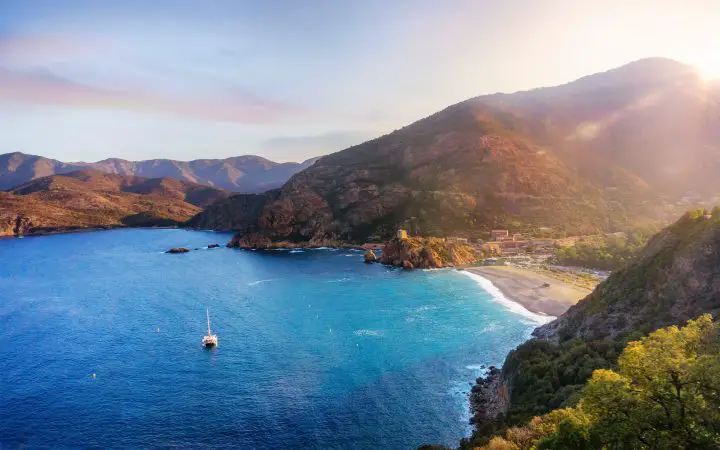
Table of Contents
Lagoon 440/450/46, leopard catamarans 42/43 (circa 2000-2007), pdq antares 44/44i, catana 471/47, fountaine pajot orana / helia 44, balance 482, what is a cruising catamaran, cruising catamaran pros, cons of catamaran offshore cruising, what to look for — best catamaran for sailing around the world, best cruising catamarans faqs, 8 popular choices for best cruising catamarans.
Every boat has strengths and weaknesses, and every list is biased. There are tons of boats out there, and it’s impossible to be familiar with every single one. Furthermore, as time passes and our needs change, the types of boats that catch our attention change.
Sailing long distances, like around the world, is a very specific mission. It’s not something you wake up one morning and say, “Today, I’m setting off around the world!”
No, a circumnavigation is the culmination of years of preparation and research. Just finding the right boat is a big part of that. Some experienced cruisers make their business helping people find the right boat to suit their needs. If you’re completely lost in the boat-buying process, reaching out to an experienced expert (not just a yacht broker!) is an important step.
One such person is John Neal. Neal runs Mahina Offshore Services and is a consultant for folks wanting to cast off the lines. He’s written extensively about what makes a good bluewater cruiser and specializes in boat consultations. Be sure to visit his website and download his free ebook, Selecting and Purchasing an Ocean Cruising Sailboat.
Another great resource, especially if you’re considering voyaging with your kids, are Jamie and Behan Gifford of Sailing Totem . They work as consultants helping couples and families find their path to a successful circumnavigation—what they call “from dream worthy to seaworthy.” Totem and crew crossed their wake a few years back, and they write for Cruising World and often speak at events like Cruiser University at the Annapolis Sailboat Show in the fall.
Here’s a look at some of the most popular long-distance cruising catamarans. This isn’t an all-inclusive list, nor are these really recommendations. Rather, they’re a look at some boats, both good and bad, to consider for the ultimate sailing adventure.
View this post on Instagram A post shared by Katamarans (@katamarans)
Lagoons are the ubiquitous production boat of the catamaran world. Next to Leopard, they dominate nearly every list of catamarans since the company makes so many of them. They’ve been cranking these boats out for over 20 years, longer than many other manufacturers. When you do the math, there’re more examples of individual Lagoon models out there than hulls made by many other manufacturers combined.
What does all that mean for the buyer? For one thing, it means it’s not hard to find a Lagoon for sale. If you pick your model, you’ll probably find a few dozen for sale worldwide at any given time. A cursory look at Yacht World shows 23 listings for the 440 and another 77 for the 450 (not including those listed separately as 450F and 450S!).
The 440 was the first of Lagoon’s popular flybridge models. This offers an upper level so that the helmsperson can see all points of the boat and is separate from the salon and cockpit area. Many liveaboard 440 owners have converted the upper flybridge with an enclosure to make it an all-weather helm.
The 450 took the 440’s success and improved all the details. The updated design was one of the most popular boats Lagoon ever made. They eventually divided the lineup it the 450F, with the standard flybridge, and the 450S, with a “sporty” helm on the aft coachroof.
Both are very popular boats and are sized right for world voyaging. They aren’t without problems, however. Around 2020, many owners began discovering serious problems with bulkheads delaminating from the hulls. However, Lagoon has an official fix, and many boats have been successfully repaired. As always, get a good survey, research, and ask the right questions!
Lagoon 450s are currently listed for anywhere between $400,000 and $800,000. 440s are older and can be found between $275,000 and $450,000. As always, keep your eyes peeled for the less common and much more comfortable owners’ version layouts with one huge master cabin.
View this post on Instagram A post shared by Solo Deniz (@solo_deniz)
Leopard is another ubiquitous brand in the catamaran world. The company’s newer models, like the current (2023) Leopard 45, have a forward seating area and a large opening door on the front of the salon. In short, they’re perfect charter boats. Leopard habitually reuses their model numbers repeatedly, making getting the right model confusing. The newest Leopard 42 started production in 2020 and features the forward patio lounge.
The Leopards included on this list are much older and lack this forward patio design. Instead, these original Leopards have a low-profile aesthetic perfect for ocean sailing. They’re comfortable and functional. They’re a little on the small size for world cruising but would be perfectly suited for a couple that wants the smallest boat they can get.
The difference between the two models was only one thing—the 42 included a soft-top bimini, while the 43 had a hard top. Most owners have now converted their 42’s soft top to a hard one.
Leopard 42s and 43s from 2000 to 2007 are currently listed between $250,000 and $350,000. The 43s, which are a bit newer, go for just a little more. Since so many saw charter use, finding good examples with owner’s layouts is hard. When you do, they’re worth the trouble to bring home.
If you’re looking for a bargain, the older Leopard 45 and 47 were remarkably similar in design. They are less common on the used market today, but if you find one in good shape, it’s worth a look.
This boat started life built by Canadian catamaran builder PDQ. The design was wildly successful. However, when PDQ shut down, the hull molds made their way to Argentina and found new life. This is one of the few catamarans out there that is built for the specific mission we’re addressing here—a long distance cruising catamaran for a couple or a small family.
The Antares is built from the keels up to be reliable, simple, comfortable, and safe. She’s not winning any races against the Outremers, Gunboats, or fastest catamarans of the world, but she makes up for it with her sturdy design and comfortable handling.
At 44 feet long, she’s the perfect length for a voyaging catamaran. She has impressive bridgedeck clearance and can handle most anything King Neptune throws her way. Her fit and finish are above average—excellent, in fact—and her layout is supremely functional. This is one catamaran that must be on your shortlist if you’re considering a circumnavigation.
Currently, two Antares are listed on the market, from $595,000 to $798,000. Only a handful of 44s are out there, and while the boat has been in production since around the year 2000, there just aren’t many to choose from. Those that are out there are coveted for their build quality and seaworthiness, so they don’t come cheap.
Catana is a French builder that makes performance catamarans with retractable daggerboards. These improve upwind performance dramatically and reduce your draft when gunkholing. Proponents of daggerboard designs will also point to their improved handling at sea, allowing the boat to slip freely down waves, thereby reducing the likelihood of capsizing in extreme conditions.
Catanas also feature a unique helm layout. Twin helms are located outboard on each stern, so you can pick your driving position for the best visibility, the best shade, or the best breeze. You’ll be driving with the autopilot from the nav station at sea anyway. It keeps sailing a little more fun when you’re out there for the fun of it.
The 47 and 47OC (Ocean Class) are the newer versions of the boat. All versions feature Catana’s uniquely strong, lightweight composite layups and distinctive asymmetric narrow hulls. They’ve got outstanding bridgedeck clearance and
Catana 47s and 47OCs are listed between $360,000 and $700,000. The older 471 is a little harder to find. Catana has always been a higher-end, low-volume brand that makes fewer hulls each year than other makes.
Fountaine Pajot is the third of the “big three” catamaran makers. The French brand is often compared to Lagoon and Leopard, but their designs have always stuck more on the performance side than the bulky cruiser side. In the ocean-going length, their 44-footers are just about right.
Regarding layouts and features, it’s hard to imagine a more perfectly suited boat than the FP 44s. These boats are big enough to carry all your stuff and give you space to spread out. But they’re also good sailors and stable at sea. They feature the preferred coachroof-mounted helm, which is raised enough to provide good visibility without being disconnected from the action in the cockpit.
Oranas are currently listed from $295,000 to $468,000, while the newer and more popular Helias go for anywhere from $447,000 to $649,000. These were popular boats with private owners, and in charter, so there are usually quite a few available.
View this post on Instagram A post shared by David & Amy (@outchasingstars)
Mantas are a well-built, American-made catamaran sailboat that went through several revisions. Overall, the hulls and layouts never changed from the early 38s to the last 42 Mark IVs. But the transoms were extended for speed and better handling, and the extra length of the later models makes them just right for a small ocean-going cat.
Balance is a South African company that has made their business to produce a modern sailing catamaran for a new age of sailing. This isn’t a legacy brand, so you aren’t going to find one at a bargain price. Instead, these boats are being built on a semi-custom basis for owners like us who want to sail their boats around the world.
The company describes the Balance 482 as a “trend-setting circumnavigator.” It won Boat of the Year from Sailing World Magazine in 2022.
HH boats are built in Asia as cutting-edge sailing catamarans for the owner/sailor market. They’re designed by Morrelli and Melvin, one of the multihull world’s top design firms.
These boats are also semi-custom, so you won’t find many on the used market. They’re known for their modern innovations, including a fold-down swim platform and an EcoDrive hybrid system. You can spec your boat with either mini keels (OC or “ocean cruising”) or daggerboards (SC or “sport cruising”).
The HH50 is the company’s best bet for circumnavigating with a small family. There’s also the capable, smaller sistership, the HH44.
Why Are Catamarans Great for Long-Distance Voyaging?
Catamarans are immensely popular for a few reasons. For one thing, they’re some of the most comfortable boats for long-term living aboard. They offer lots of living space, storage, and tankage. They have panoramic views, with huge windows letting light and air into the open salon. Unlike classic monohull sailboats, they are not dark and stuffy at all.
Catamarans also don’t heel like monohull sailboats do. This is good and bad, but most people (especially non-sailors) prefer it. It means when you’re sailing, you aren’t at an angle for days or weeks at a time. Your stuff isn’t constantly rolling downhill on the counter and falling out of the medicine cabinet whenever you open the door. They still move and rock on the waves, but the motion is always more upright than heeled to one side.
There are a dozen other reasons folks prefer catamarans to monohulls for long-distance or long-term traveling. And, like all things in boating, every sailor is a little different. Some don’t like catamarans and prefer a beefy bluewater monohull’s stability and solid feel. Your mileage may vary, as the saying goes.
Of course, the longest voyage of them all is sailing around the world. The typical downwind circumnavigation involves several long-distance passages and many months of hopping through remote island nations. The longest leg is typically from Panama or the Galapagos Islands to French Polynesia (The Marquesa Islands), a leg of at least 3,000 nm that typically takes 20 days or more.
In total, a circumnavigation takes at least 18 months but commonly even longer. That’s a long time to spend on any vessel, so the comfort of a cruising catamaran makes a lot of sense.
A cruising catamaran is roughly defined as one designed to carry passengers and crew long distances. Obviously, this means it needs to be equipped with staterooms and heads, a galley, and a salon. But that also means it must hold enough fuel and water to keep its passengers safe for long voyages.
The cat also needs to be designed to be stable enough for all of that to be used to capacity. Two to four people, plus enough supplies to keep them fed and healthy for months, weighs quite a lot. Then you add in spare parts, water toys, and other goodies, and it adds up. Catamaran speed and stability come from its lightweight design. If you make it too heavy and overload it, it will be slow and less stable in rough conditions.
When you consider all of this, you’ll come up with a minimum size for a catamaran to carry all the stuff you need for such a long voyage. Generally, the smallest cats in this class will be around 42 feet long. This is the right size for a cruising couple that doesn’t often sail with others. A 44-footer will be a little more comfortable and make having occasional guests onboard a more pleasant experience. Once you get to 50 feet or longer, the boat is a bit large for most private owner skippers to handle. Costs start to balloon at this length and above, as well.
What about a small catamaran ? Many people have successfully done the trip in smaller boats, of course. Generally, however, these smaller cats are pushed to their limits in terms of load carrying capacity. In most cases, circumnavigators will take on extra crew for longer legs (this is sometimes even an insurance requirement!). The ride in rough seas is not as good in shorter cats, which tend to hobby horse more in a chop. So, overall, 42 feet and above is about the sweet spot.
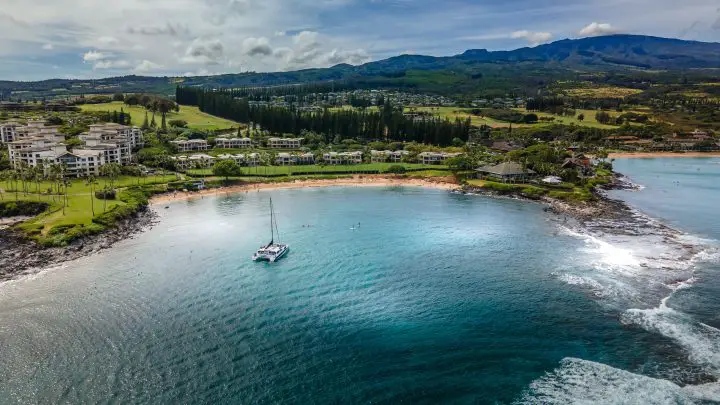
Comfortable Living Space
The huge salons and cockpits catamarans offer, with comfortable seating at big tables, truly improve your life at sea. The importance of all the light and air coming through those windows can’t be underestimated—it’s great at anchor when enjoying the sunset. But it’s also great to have an interior nav station where you can keep watch from the comfort of the salon. In short, a liveaboard catamaran is one of the most comfortable options for any type of cruising.
Better Speed, Especially Downwind
Compared to monohulls of similar length, catamarans are nearly always faster. This goes for fast catamarans, sure, but also for cruising catamarans. This becomes very apparent when traveling downwind, something that most monohulls struggle with. And downwind is the preferred direction to travel on a sail around the world route .
Comfort at Sea
The lack of heeling makes catamarans the preferred choice for long distance sailing. When given the choice of doing a 20-day passage perfectly upright or at a 10-degree tilt, which would you pick? Even the saltiest of sailors has to agree that heeling over is fun for a while but gets tiring quickly.
Redundant Systems and Structures
With two hulls, two engines, two water tanks, two fuel tanks, two sets of bilge pumps, and tons of other redundancy built in, catamarans offer owners extra layers of safety.
If all of this sounds too good to be true, it’s because we haven’t discussed the most limiting factor for most sailors—the cost of the boat! Catamarans are expensive from the outset. When juggling all of the factors with an around-the-world cruise, boat cost is the biggest.
Catamarans cost more than monohulls for many reasons. They are larger, but even still, they often sell for more. One reason is their popularity. These boats are in demand. Far fewer examples are on the market than monohulls, and more buyers are looking to purchase them. So prices are high and are likely to stay high. On the other hand, Monohull prices are much lower because there are more monohulls out there than there are monohull buyers.
With any boat, there is also the cost of keeping it once you own it. The larger the boat, the greater your expenses will be. This is true for everything from maintenance to storage. Catamarans cost more than monohulls in nearly every instance. For maintenance, you’ll be limited to facilities that can haul a boat with your width—which will be more expensive. You’ll have two engines, which means twice the maintenance and twice the replacement cost when that time comes.
Choppy Motion
Despite all the plusses and the flat ride, plenty of sailors out there just don’t like the ride a catamaran offers. You have to take one to sea to understand fully. A catamaran is light and tries to fly across the water, from wave to wave. It smacks each wave twice and always tries to come back upright after each impact. This leads to a choppy, jarring ride sometimes.
A monohull is built heavy and is designed to slice through the waves and push the water out of its way. The wind pressure on the sails keeps the boat’s angle steady (in most cases). So, a heavy monohull can ride quite comfortably in a chop, whereas a catamaran might feel like it’s taking a pounding. Many heavy-displacement monohulls built for long-distance travel were designed to provide a soft, comfortable ride that allows the crew to rest.
All sea conditions are different, as are all sailors and their expectations. So this is a personal choice as to which method you like better. And for every condition uncomfortable in a catamaran but smoother in a monohull, there’s something smooth and lovely in the cat and uncomfortable in the monohull. The ocean is just like that.
All cruising cats over about 40 feet are capable, and most have become proven circumnavigators in the past few decades. The right one for you simply comes down to the balance of cruising amenities versus performance. Fast catamarans are all the rage, but you’ll have to put a price on exactly how much performance you can afford.
To learn more about other boats before deciding, check out:
- Catamaran vs Pontoon
- Yacht vs Sailboat
What type of boat is best for sailing around the world?
The type of boat best suited to sailing around the world is a well-built, long-distance cruising boat. Many sailboats fall into the camp, both monohulls and catamarans.
This question has a million answers. Ask every sailor who wants to go around the world, and you’ll get a different one. And, once they’ve sailed around the world on that boat, they’d choose a different boat. The only rule is that there is no perfect boat.
What is the best catamaran to sail Caribbean?
Catamarans are extremely popular in the Caribbean because their open-air living space allows cooling airflow. Their living space is supremely suited for the tropical environment—imagine living al fresco on the waterfront all the time!
The right catamaran for the job depends on your group size and how long you intend to spend aboard. Full-time liveaboard couples prefer cats in the 38 to 44-foot range, while small families opt for something slightly larger.
Are catamarans easier to sail?
Catamarans are easy to sail—but similar to sailing a similar-length monohull sailboat. Beginners sometimes find them less intimidating because they do not heel and therefore seem more stable. However, monohulls are more forgiving of errors. Catamarans have large sails and rigging, and reefing early to avoid overloading the rig is extremely important on these boats. For more on beginner boats, check out my post: Best Boat for Beginners .
Matt has been boating around Florida for over 25 years in everything from small powerboats to large cruising catamarans. He currently lives aboard a 38-foot Cabo Rico sailboat with his wife Lucy and adventure dog Chelsea. Together, they cruise between winters in The Bahamas and summers in the Chesapeake Bay.
Leave a comment
Your email address will not be published. Required fields are marked *
Save my name, email, and website in this browser for the next time I comment.
- Boat Reviews
- Press Releases

Circumnavigating in a Power Catamaran - A Leopard 53 PC Owner Story
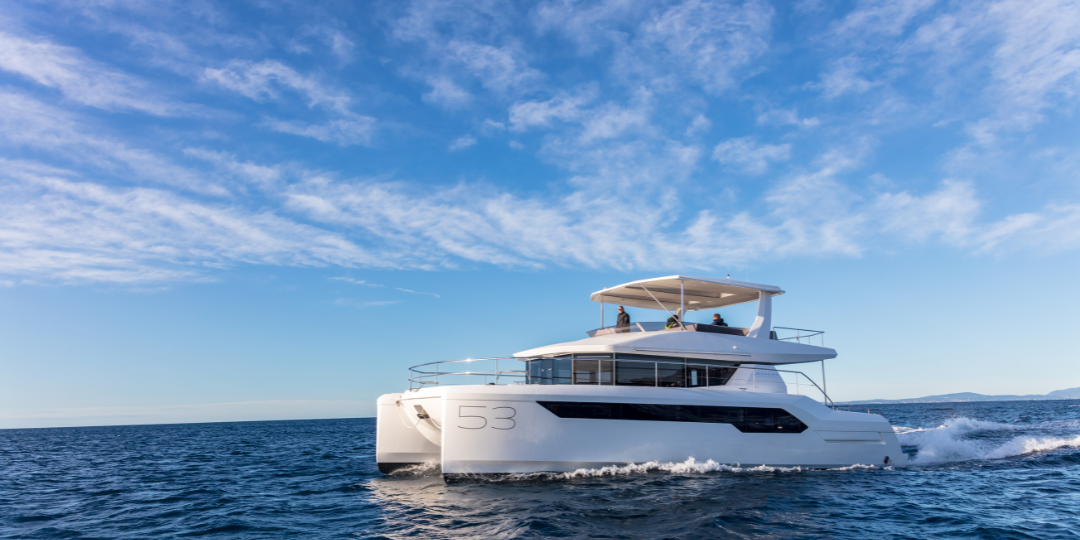
When boating folks talk about circumnavigating the globe, they generally think about doing so under sail. Sailboats use wind for fuel and handle well in offshore conditions, right?
Many who consider circling the globe on a power assume that a trawler or other slow-displacement boat is the way to go. How else can you do it without massive fuel tanks and a slow, efficient hull design?
Well, you know what happens when we assume.
Don Richards and his wife, Anja, are currently making a circumnavigation in their Leopard 53 Powercat. We caught up with them in Tahiti as they prepared for the next leg of their journey.
-4.png?width=1080&height=540&name=Untitled%20design%20(12)-4.png)
Coming from a monohull
This is Don and Anja’s second circumnavigation. That first experience, made in a monohull sailboat, shaped their plans for their current adventure, including the decision to make the odyssey in a Powercat.
"Mainly, I got tired of sailing and grinding winches," Don told us. "I'm nearly seventy. I'm done raising the mainsail."
He also noted that while sailors spend a great deal of time under sail on longer transits, once they arrive at a destination, most of their shorter trips—between islands, for example—are under power. So why not just motor all the time?
"The biggest difference once you arrive at a destination," he adds, "is the Powercat is a floating apartment compared to a monohull. It's a lot more comfortable."
-3.png?width=1080&height=540&name=Untitled%20design%20(17)-3.png)
Powercat passage making
The Richards picked up their new Powercat 53 at the Leopard facility in Cape Town, South Africa. They spent a lot of time there making measured runs, logging fuel consumption and building realistic performance curves for passage making. Their work paid off, and their load and consumption tables were accurate throughout their Atlantic and Pacific crossings.
The couple travels at a leisurely pace to maximize range. Don and Anja do most of their crossings and passages at seven knots, which gives them a range of close to 1,700 miles. At nine knots, by comparison, their range drops to 1,000. They've installed reserve tanks with an extra 100 gallons (400 liters) of fuel but never needed those reserves for cruising. The Richards filled two 290-gallon (1,100L) fuel bladders carried on deck for a few very long passages.
Of course, the Powercat’s ability to cruise at 18 knots comes in handy when rough weather looms, the customs office is closing, or nightfall approaches.
"A big difference between powering and sailing is knowing when you'll get there," Don says. Since you're not subject to the vagaries of light air and wind direction, planning is much more accurate and predictable under power.
-3.png?width=1080&height=540&name=Untitled%20design%20(15)-3.png)
The passage west
The Richards are Australian and may eventually bring their Powercat back to Australia. Like most cruisers, however, they write their plans in wet sand at low tide, so they're still determining when or if they'll finally get it Down Under.
Of course, the shortest straight-line distance from Cape Town to Australia is east, across the Indian Ocean, but that is not a recommended route. Prevailing wind patterns, currents, and weather make a passage east from Cape Town unpleasant and possibly dangerous.
"We spoke to a lot of experienced delivery captains and skippers. And they all said clearly, do not go east," says Don.
Instead, they headed north and west across the South Atlantic. They envisioned heading up through the Caribbean to the U.S. East Coast and over to Europe to cruise the Mediterranean. But the realities of hurricane season and insurance needs kept them south, and they found themselves headed towards Panama and passing through the canal.
On their last circumnavigation, Howard and Anja didn't make it to Central America or Mexico, so they headed north after coming through the Panama Canal to see it this time. Eventually, they set out from Puerto Vallarta, Mexico for French Polynesia, where they made landfall after a 2,710-mile leg to Hiva Oa. Almost all of that was powering straight on the rhumb line.
-3.png?width=1080&height=540&name=Untitled%20design%20(18)-3.png)
Cruising differences
The most notable differences when cruising with a Powercat instead of a monohull are the onboard space and comfort. There's no comparison with a monohull for the comfortable living space on a stable platform with a full-sized galley. The other is redundancy. You’ve got two engines in two hulls, so there’s always a second engine if one has trouble.
The Powercat also changes where and how the Richards anchor since they can tuck in closer to shore inside the keelboats. Anchoring in shallow water with more protection from shore is almost always better, and moving short distances between anchorages is quick and comfortable.
Hauling the Powercat out of the water takes a little more planning. Like a sailing catamaran, you have a lot more beam and need a travel lift to handle the size. But the bridge deck and cross beams are stout, and Robertson and Caine, builders of the Leopard Powercat, were always available with helpful instructions for where to best place the straps for the safest lift.

Where to next?
The Richards’ current plan is to head to Samoa and likely spend the cyclone season in New Zealand. Next year, they may visit Vanuatu, New Caledonia, and stop at Norfolk Island. Like all their plans, these may change with the conditions.
"We'd also love to head over the top of Australia back to southeast Asia," Don says. "Maybe the Solomons, Papua New Guinea. Australia's always an option, too. Who knows?"
When asked one thing potential Powercat cruisers should know, Don's answer was unequivocal: "You need to know that you can get almost anywhere with the standard tanks. Sure, you've got to slow it down. But don't think you'll be limited by fuel if you don't want to be."
No limits. Sounds like the perfect mantra for world cruisers.
Topics: Leopard 53 PC
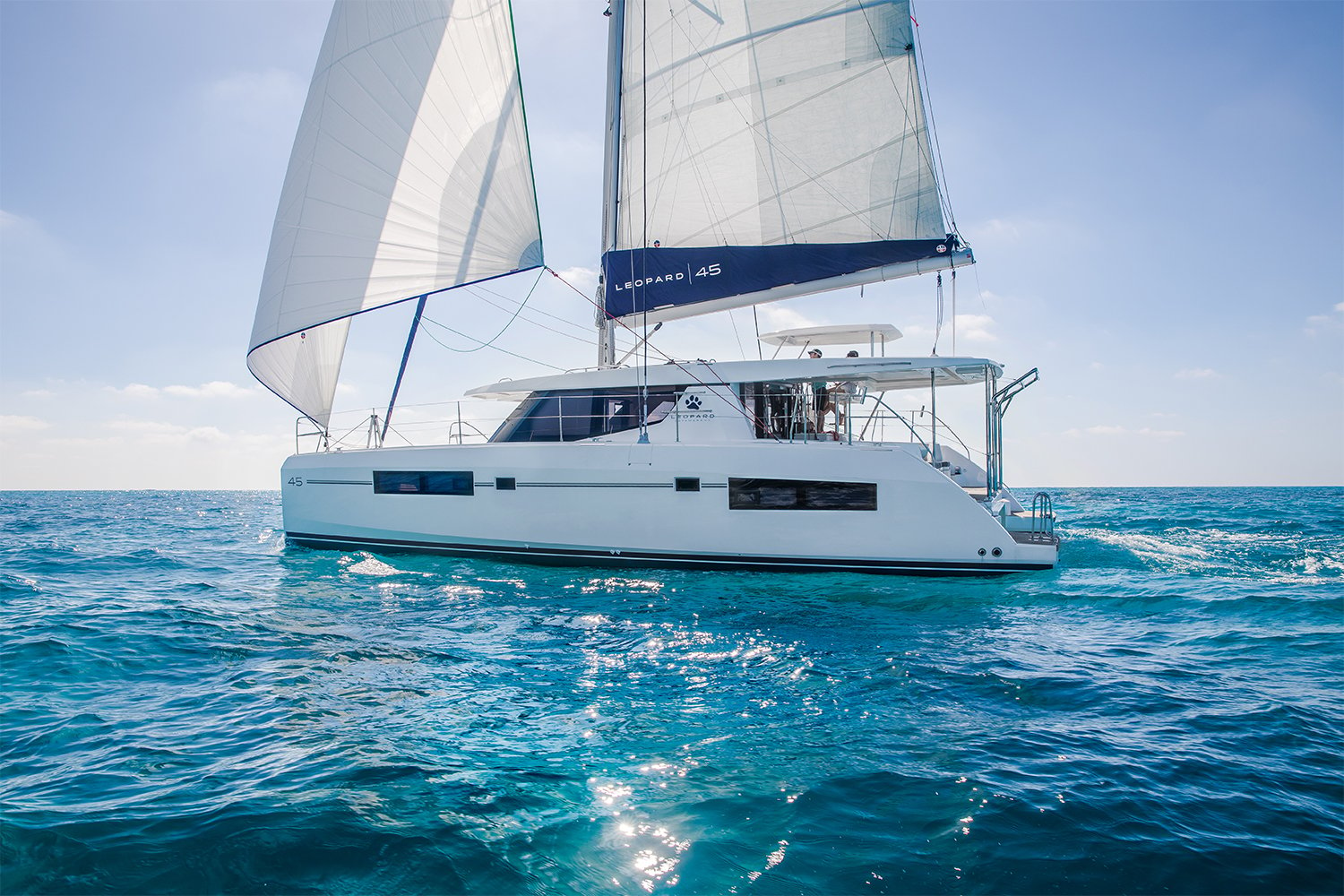
Leopard Catamarans
Subscribe here.
Our Catamarans
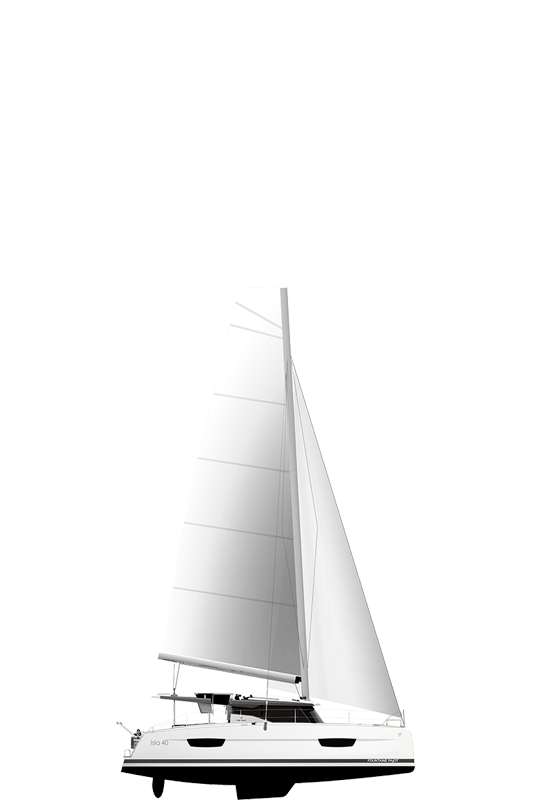
Explore our models in a different way thanks to the virtual marina
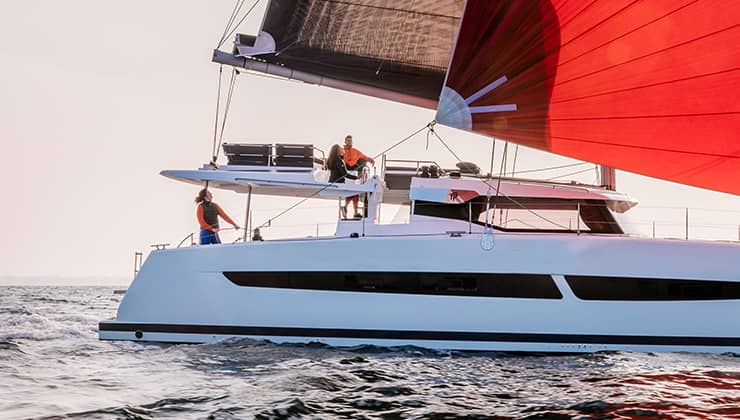
Efficiency through design
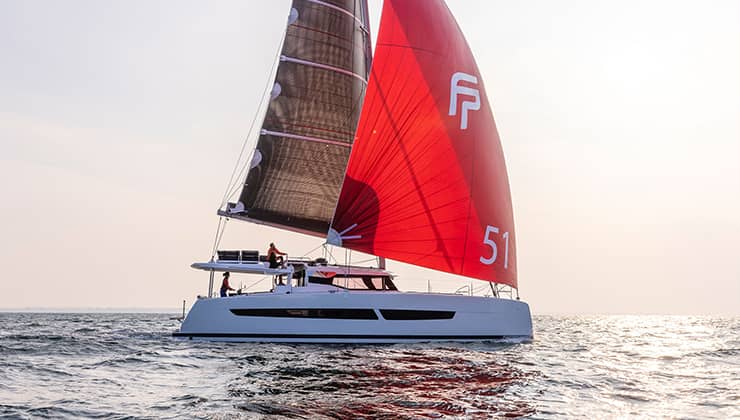
A feel for the sea: sailboats first and foremost
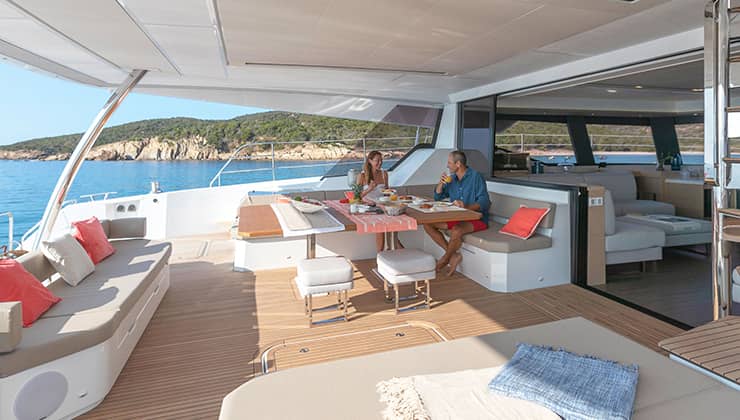
When volume transforms to real space
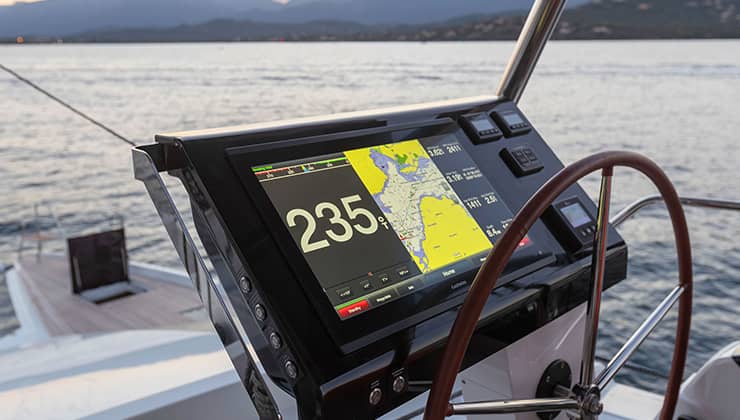
Innovation as a foundation
- Smart Electric
- Virtual marina
- Experiences
A circumnavigation sailing trip on a catamaran : a 1,546-day adventure across 27 countries
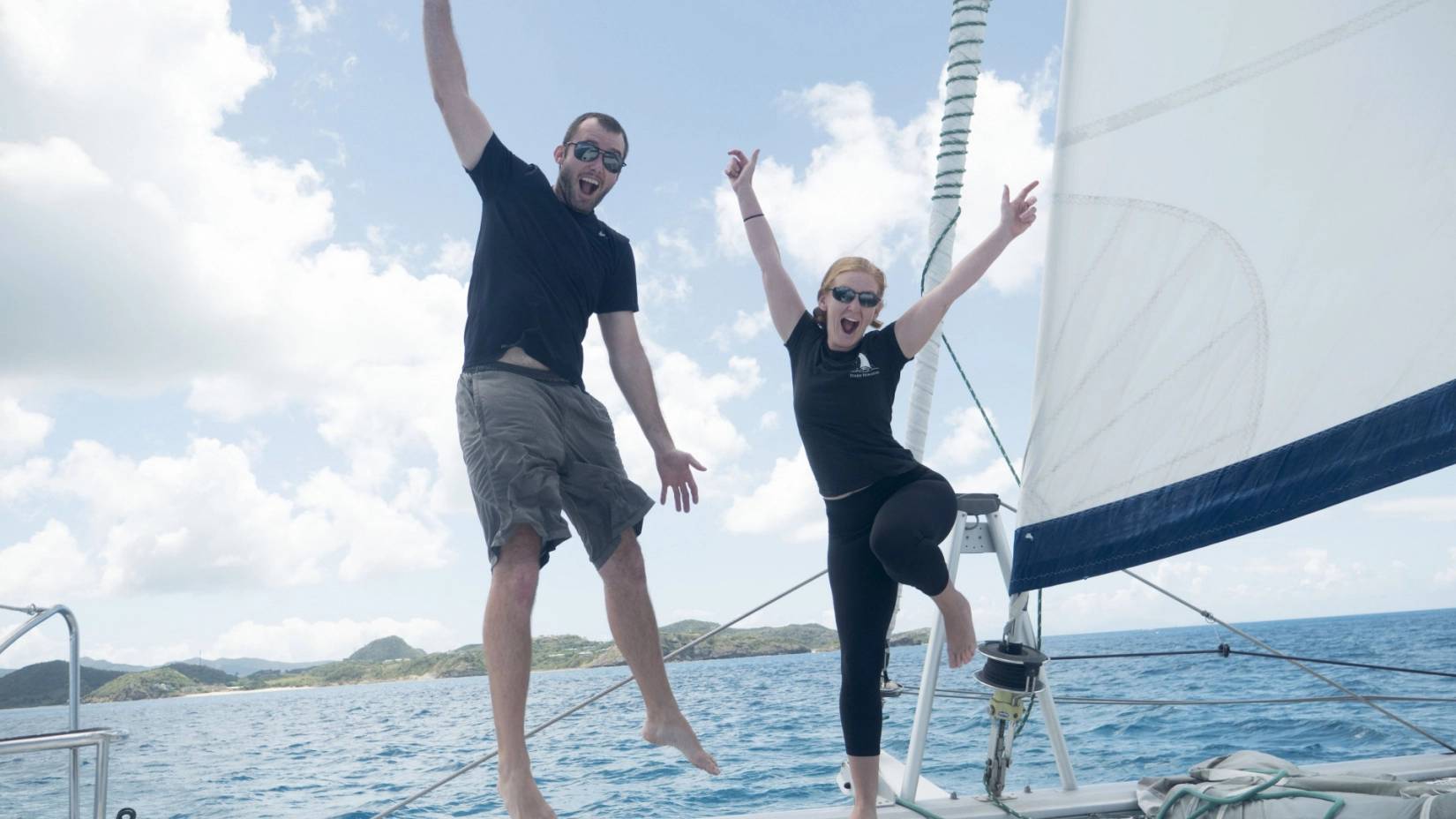
David and Amy
Round-the-world
Trip duration
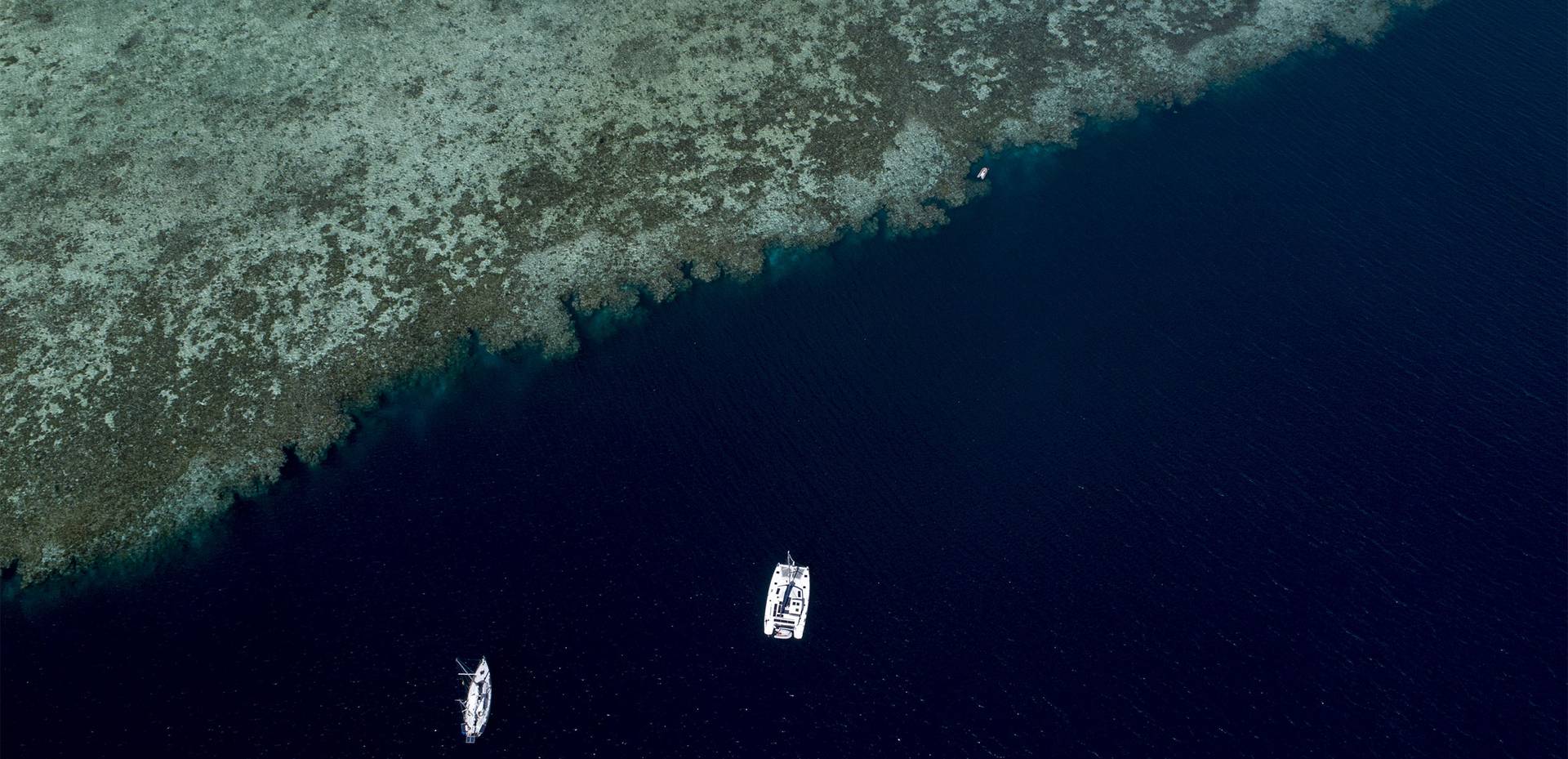
A round-the-world in 1,546 days
Onboard their Fountaine Pajot Hélia 44 “Starry Horizons”, the couple criss-crossed the seas and oceans for no less than 546 days, covering more than 34,140 nautical miles and 27 countries from the port of Antigua in the Caribbean, forming a loop around the equador.
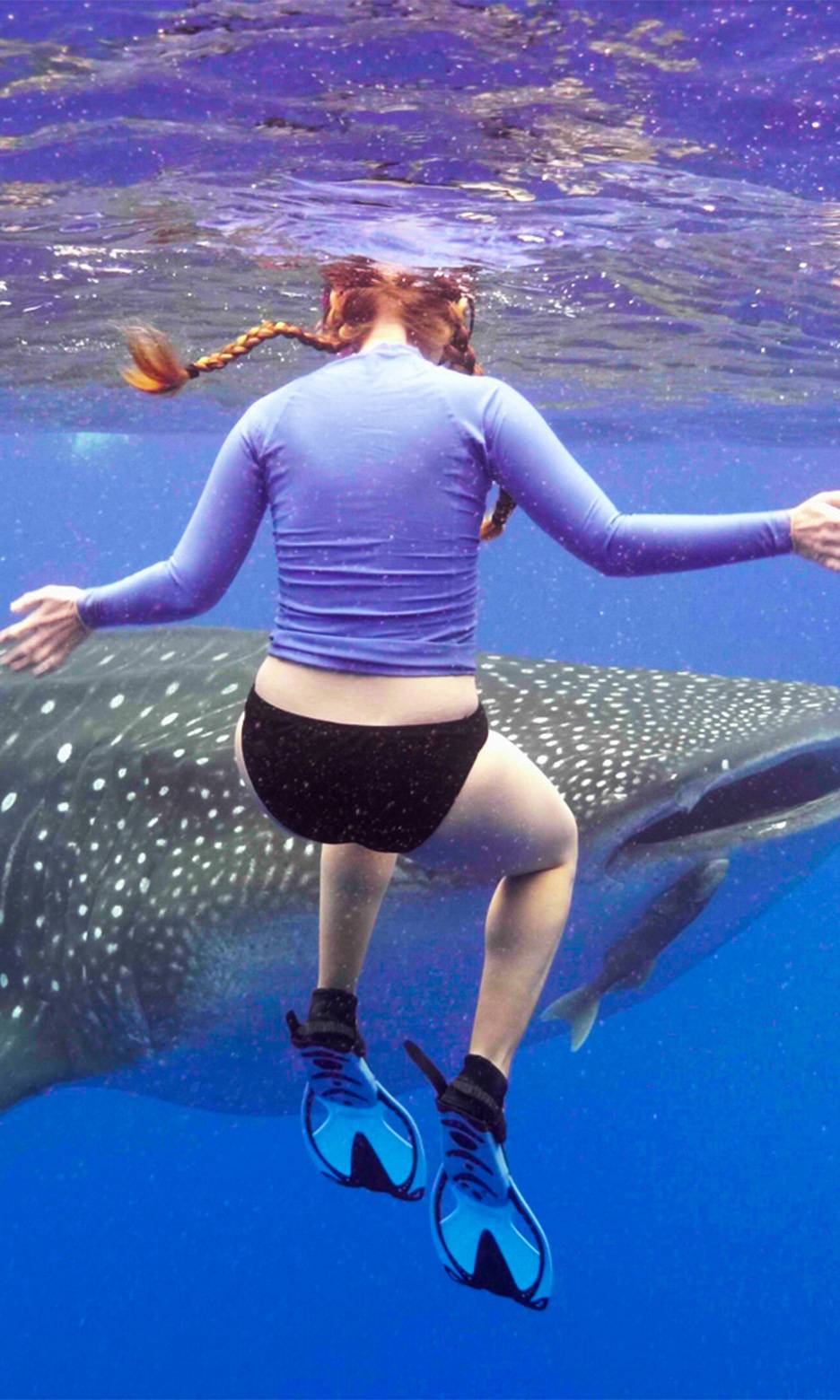
Presentation of the crew
“We are David and Amy Alton, two thirty-something-year-old Americans. When we met, Amy was an engineer and David was in the oil and gas industry in finance. While Amy had grown up around boats all her life, David had only been sailing once! Soon after we met, Amy took over the family business in the maritime industry.
Eventually, we both got our USCG 100 Ton Master’s licenses and David came to work for Amy driving her boats. This is why we call her the Admiral!”
Preparation for the circumnavigation
“Since we were both licensed captains and had been day sailing around Galveston Bay on our previous 30 feet catamaran, we had an advantage over cruisers who are starting from scratch. We did want to get more experience on bigger boats, so we chartered down in the Caribbean.
Of course, we read a lot of books, blogs, and magazines. There were hardly any sailing YouTube channels out at the time, so that wasn’t a big thing for us.”
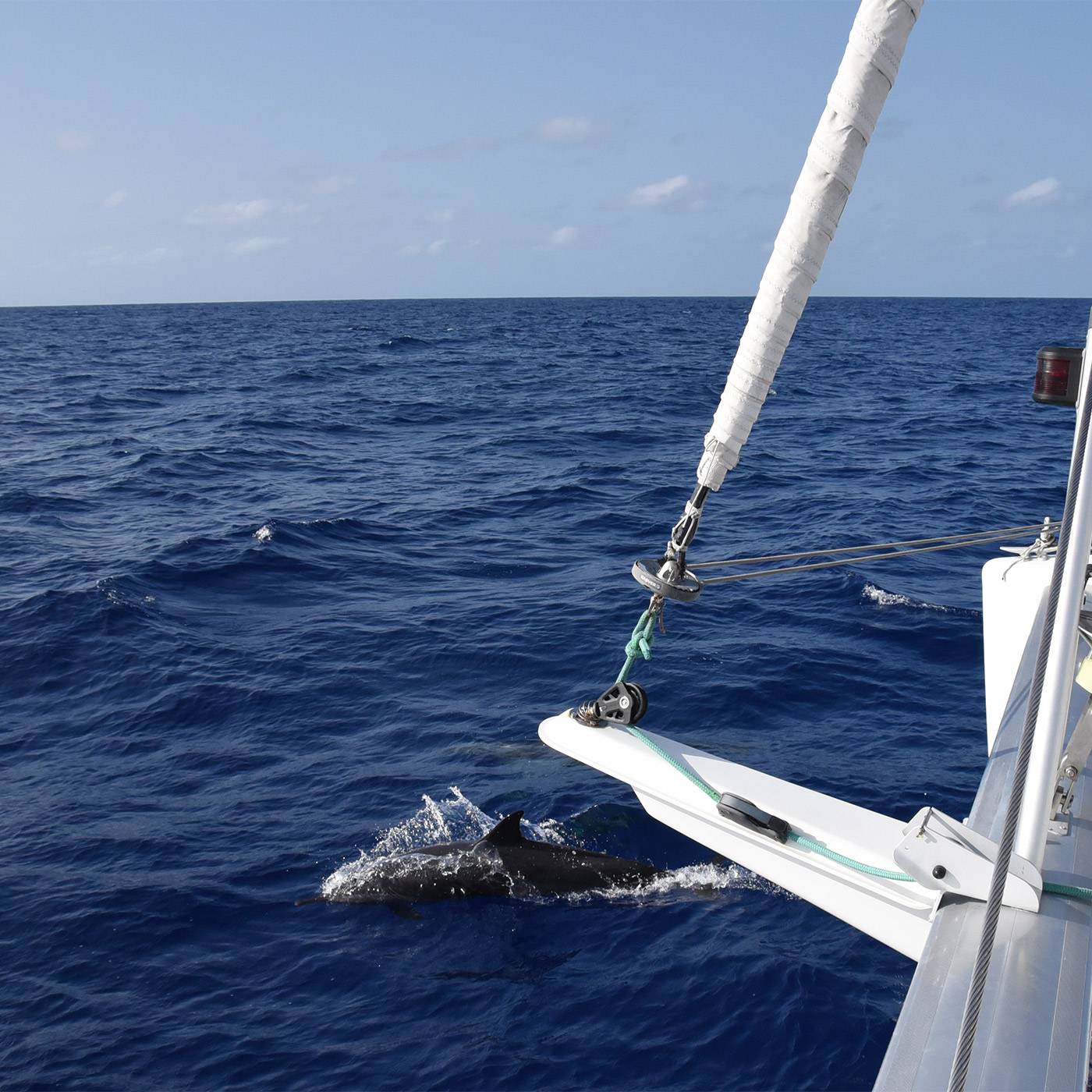
A cruise of more than 34,140 nautical miles
“We picked up our boat from the factory in La Rochelle in October of 2014. From there, we did a self-delivery, bringing the boat to Florida in three steps to do some outfitting to kit her out for a long-term cruising boat.
From Florida, we sailed the Bahamas, then up to Nova Scotia and Maine before heading down to the Caribbean. Three months later, we passed through the Panama Canal and spent two seasons in the South Pacific.
After seven months in Australia, we sailed up through Southeast Asia, then across the Indian Ocean, exploring lots of remote islands. In December of 2019, we passed the Cape of Good Hope in South Africa, and in March of 2020, we docked in Antigua, crossing our wake and completing our world circumnavigation. “
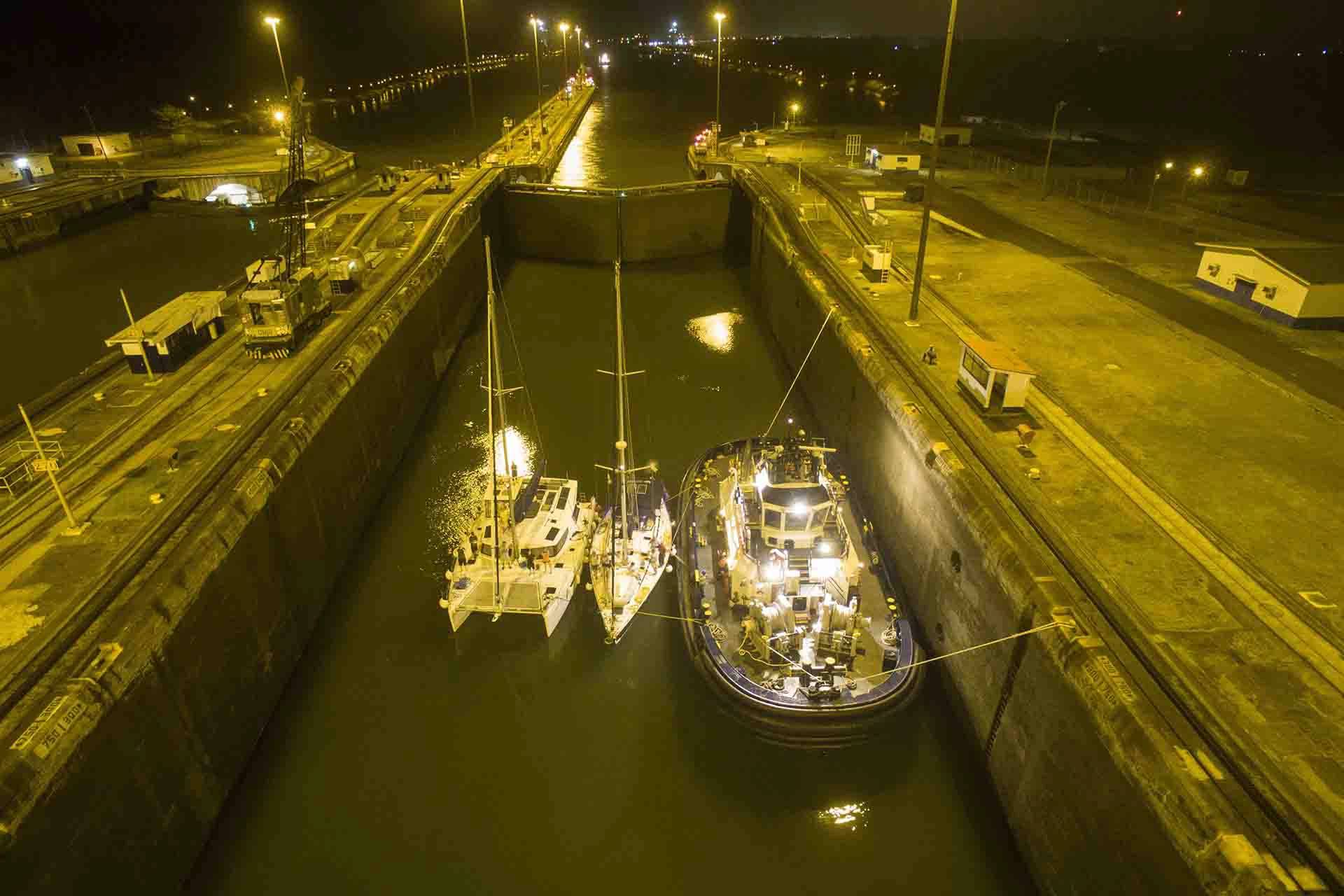
Favorite sailing areas
“The South Pacific is easily our favorite sailing ground. The islands are remote and incredibly beautiful, and the people are amazingly friendly. French Polynesia is a dream destination, with rugged islands in the Marquesas, or idyllic atolls in the Tuamotus. Bora Bora exceeded expectations with crystal clear water and manta rays.”
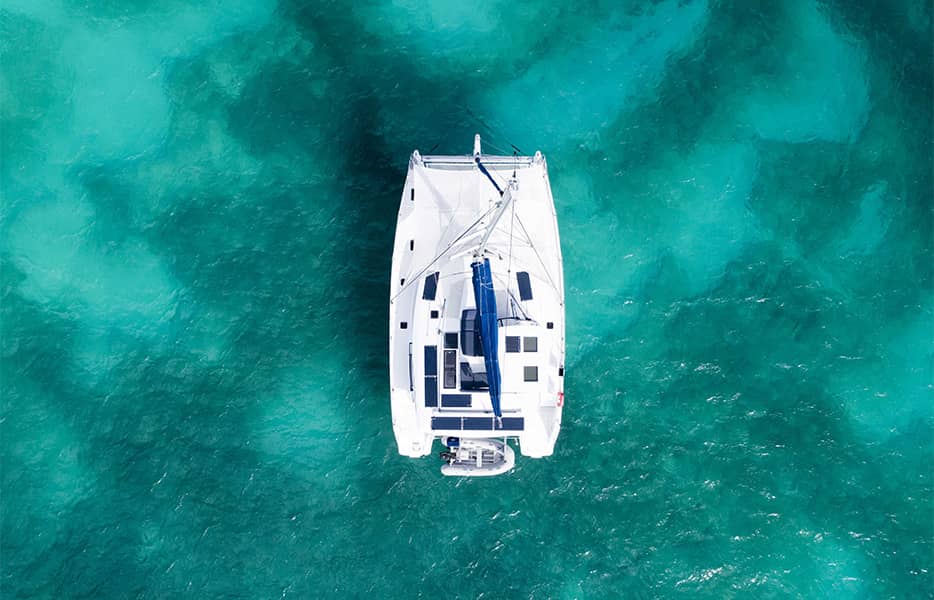
Choosing the right catamaran for a circumnavigation
“When we were boat shopping, we had a list of requirements that we wanted. We did primarily look at the biggest production yards because we wanted to keep a strong resale value and yards like Fountaine Pajot have a good reputation – they’ve been building great boats for so long.
We went to the Annapolis Boat Show with a few models in mind, and when we got on the Helia is was an easy decision. The layout of the boat is amazing, and while she’s got plenty of space, she is definitely on the faster side for cruising boats.
All around the world we have meet Fountaine Pajots of all ages and sizes. Starry Horizons has held up very well in the nearly six years we have owned her, so we’ve been very pleased with our purchase.”
Circumnavigate on a catamaran
“On our entire circumnavigation, we spent less than 13% of our nights at sea. This means that 87% of the time we were stationary, at anchor or in a marina, taking advantage of the space our catamaran offered us.
Moreover, when we were sailing, we were mainly sailing downwind. Although we didn’t have much experience with monohulls, many friends complained about the performance of their boat downwind. Starry Horizons is super comfortable downwind.
It is also extremely performant and very safe, we always had confidence in our boat, even when the sea was rough, in squalls or tropical storms.”
Next adventures
“Right now, Starry Horizons is taking a well-deserved rest on the hard for hurricane season. We are back in Texas visiting our families.
We will launch again sometime within the next twelve months and cruise close to home; the Bahamas, Chesapeake Bay, or other nearby places. After that, we don’t have any plans!”
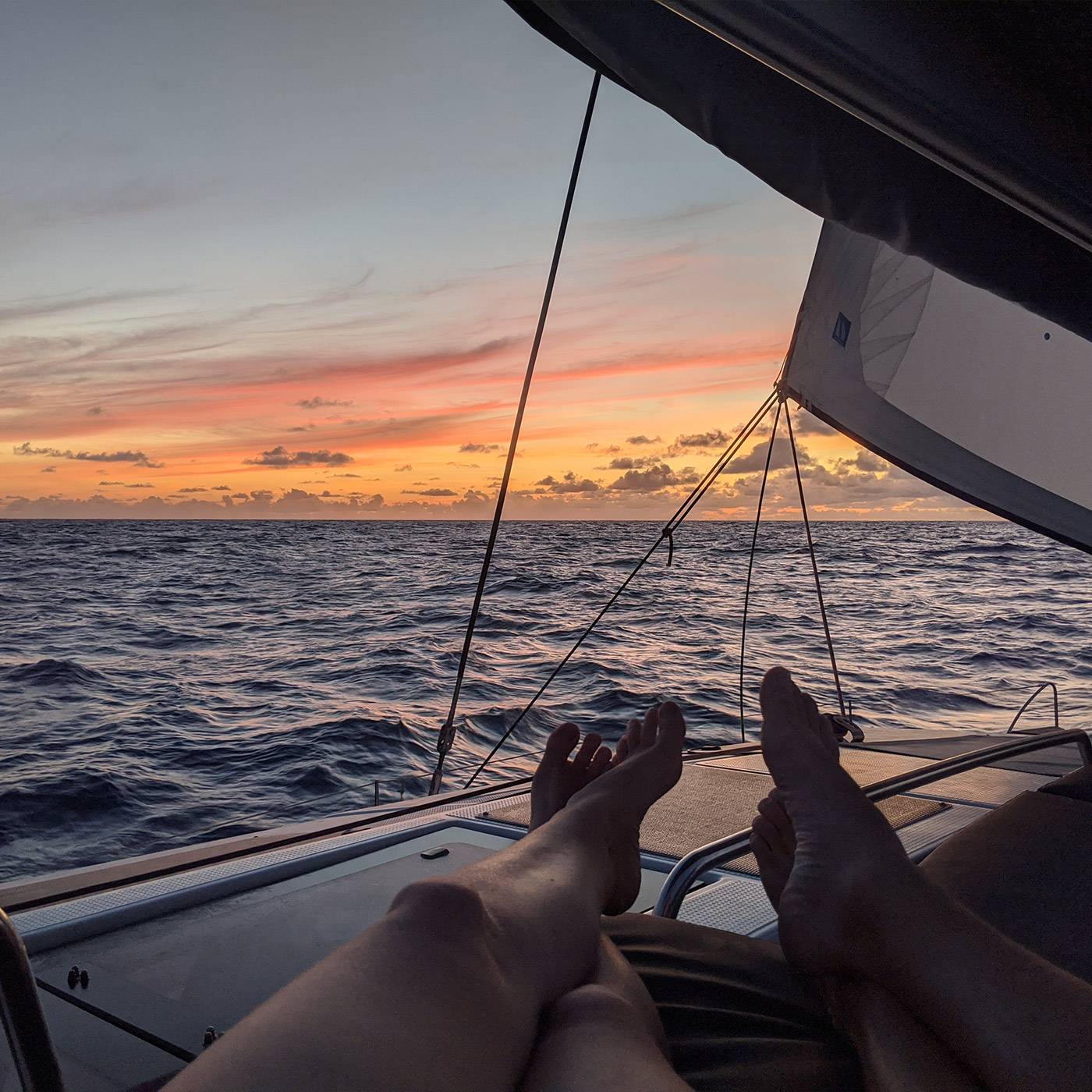
David and Amy regularly share tips and surprising anecdotes on their blog to accompany you in your navigations, the preparation for long cruises or simply to share their most beautiful sailing experiences and anchorages.
Starry horizons’ circumnavigation in a nutshell
- Leaving Antigua on December 30, 2015
- 10 navigations au long courslong-range navogations (1,000+ nm)
- 1,546 sailing days
- 4 crossings of the equator
- 22 nautical miles/day in average
- 34,140 nautical miles travelled
- 6 hauls out
- 27 countries and territories crossed
- 7 home returns
- 93.5% of the miles sailed as. a duo
- Arrival in Antigua on March 26, 2020
Subscribe to the newsletter
Follow the adventures of Fountaine Pajot Owners, discover the latest news and upcoming events, and take part in the development of the Boat of tomorrow!
Compare models
Catamaran Isla 40
Catamaran Astréa 42

Hosting capacity
Motorisation
Technical information
User-friendly areas
Sunbathing Non
Kitchen Non
Sunbathing Oui
Discover the prices
Double rooms
Your contact details
One last step before reaching the next page & discovering the prices proposed & main options for this version! You'll then be able, to schedule a live chat with your local dealer to discuss all the options and configurations available for this model!
Your home port
Any questions?
No pack information currently available online for this Flagship model. We will get back to you directly. Thank you
Would you like to configure this model’s options or set up another model?
Make an appointment with your nearest dealer and choose the boat of your dreams.
Planning a Circumnavigation
THIS POST MAY CONTAIN AFFILIATE LINKS. PLEASE READ OUR DISCLOSURE FOR MORE INFO.
Last Updated on September 13, 2023 by Amy
Plotting world circumnavigation routes is a lot easier than it sounds. There are cruising boats LITERALLY all over the world. There are boats in the Northwest passage (up and over Canada), in the Antarctic, and everywhere in between. There are a few key things to take into consideration, but 95%* of circumnavigation routes follow the same general course.
Table of Contents - Click to Jump
Insurance Restrictions on Circumnavigation Routes
There are two major restrictions put on us by our vessel insurance; stay out of highly pirated areas and stay out of named storm zones. Insurance restrictions come with the option to ignore them. You can always go to these restricted places, BUT if something happens, your insurance will not be covered. Another option is that you can pay significantly more to be covered in these places as well. We have made the choice for ourselves to follow the restrictions set by our insurance.
By definition, piracy is the act of attacking and robbing ships at sea. By that main definition, the Caribbean is one of the worst places for piracy. Petty theft of boats and their tenders is a major issue in some parts of the Caribbean, and steps should be taken to protect yourself and your assets.
However, the piracy of the biggest concern is murder and kidnapping. There are two main hotspots where our insurance will not cover us; the Philippines and the Red Sea/Suez Canal (hereby referred to as simply Suez). Again, people cruise literally everywhere in the world, and there are people who cruise the Philippines (2015 reports state 200 yachts). The other side of the coin is true too. Just because you avoid the Suez or the Philippines does not mean you will avoid being kidnapped or murdered.
It’s up to you to decide the level of risk you are willing to take when planning out a circumnavigation route.
Tropical Storms
In North America, it’s a hurricane. South of the equator, it’s cyclones. In Asia-Pacific, it’s typhoons. Either way, your insurance probably has a word or two to say about where you spend tropical storm season.
Our insurance requires us to avoid certain parts of the world during storm seasons. This is why there is a mass exodus of boats from the Caribbean every year. Our insurance requires us to be north of roughly the Florida-Georgia line. Now, that doesn’t mean we are safe from hurricanes, but it does mean if something happens, we will have the privilege of consoling ourselves of our losses by applying for an insurance claim.
For those moving quickly, your primary concern is systems in the southern hemisphere. Just make sure you are moving from east to west quickly enough to pass through the storm zone.
World circumnavigation routes, like ours, usually have you dipping out of these storm zones for the season. It’s a great time to haul your boat out for annual maintenance, like we did in New Zealand, Australia, and Thailand.
Tradewinds for Circumnavigating
Around the equator lies the doldrums. This is typically an area with very little wind. However, each ocean has a wind pattern. In the northern hemisphere, winds circulate clockwise. In the southern hemisphere, winds circulate counterclockwise. This means that on either side of the equator lies a band of wind flowing from east to west. This is why 95%* of cruisers plan their circumnavigation routes to sail from east to west.
Factoring the Wind into Outfitting Your Boat
Knowing where you will sail will help you determine what kind of sail performance you are looking for in a boat. For someone doing a typical circumnavigation route, sailing east to west, you’ll be sailing downwind a lot. Some monohull owners have complained to us about how uncomfortable their boat is sailing dead downwind. Catamarans, however, typically perform best downwind. We have a very smooth ride when we are traveling with the wind and waves.
Outfitting your sail locker also factors in where you are sailing. For a downwind circumnavigation, spinnakers are highly useful – or so we hear. We’ve not had terrible success with our spinnaker, but find our screecher to be very useful. That could possibly be because we deviate enough from the standard downwind route.
For more about sail configurations in a cruising catamaran, read our Sail Trim blog post.
Those Who Sail West to East Circumnavigation Routes
There are a few who do sail the “wrong way”. It can definitely be done and done fast. However, you need to have a boat that sails well to wind. While most catamarans sail well downwind, we do not sail well into the wind. However, if your catamaran has daggerboards, you’ll sail much better to wind than a catamaran without daggerboards.
Circumnavigation Routes & Bottlenecks
This is why most circumnavigations follow the same basic route. There are major bottlenecks to passing around the continents, so again, we’ve got the 95%* of boats funneling into one narrow part of the world.
Panama Canal
We paid $1300 to transit the Panama Canal because the only other option is to sail against the wind and waves around either North America or South America. Taking one of the high latitudes routes is pretty dang extreme, takes a significant amount of time, and a toll on ship and crew. Ushuaia, a port of call in Argentina, reported 64 boats in 2015, versus 1,079 boats transiting the canal – 95% transiting the canal*.
Torres Strait
The Torres Strait occupies the space between Australia and New Guinea. It’s fairly small, just 650 nm between Thursday Island and Indonesia’s first port of clearance.
There are some cruisers (like our friends on S/V Field Trip) who are going over the top of New Guinea to get to Southeast Asia. Getting any further north than that requires dealing with the Philippines – either through or around the top of the Philippines into the South China Sea.
Cape of Good Hope
Traveling around South Africa requires tackling the Cape of Good Hope, which is not to be taken lightly due to the challenges in the winds and currents. The alternative is the Suez. There used to be a rally passing through the Suez. The other alternative is to hire private security, but that’s pretty complex. Reports show 358 boats sailing through Cape Town verses 19 through the Suez – again, 95% choose Cape Town*. I know the Mediterranean is a great cruising ground, but we decided if we want to cruise it, we’d rather cross the Atlantic twice than go through the Suez.
How Long Should a Circumnavigation Take?
Barring racing yachts who are smashing world records, it’s not uncommon to complete a circumnavigation in a year and a half. This is a fairly straightforward and quick route.
The World ARC is a one and a half year rally that circumnavigates the world. They have a fantastic route and schedule on their website.
Longer circumnavigation routes still use the same general track, but add on detours. For example, we extended our South Pacific portion into two seasons by sailing south to spend cyclone season in New Zealand.
We’ve met sailors who have taken 15 or more years to circumnavigate. That’s a lot of detours!
Our Circumnavigation Route
Our sailing circumnavigation route took us four years and three months to travel all the way around the world. You can read the summary of our world circumnavigation for more details.
Book: World Cruising Routes
This is LITERALLY the bible of sailing around the world. If you have ever asked yourself (or, god help you, asked on a forum) “I wonder when the best time to sail from X to Y is?” the answer is in this book.
Even though we know our route, I’m still pulling out this book every so often to look up possibilities. It’s a great guide to planning your circumnavigation route overall and planning each individual passage.
Buy Jimmy Cornell’s World Cruising Routes .
Book: Cornell’s Ocean Atlas
This handy reference book is full of windgrams – “a summary of wind direction and strength derived from the individual windroses along a specific ocean route “. Basically this means you can open a chart for a particular region and month and you will be able to tell where the wind “usually” blows from.
Buy Cornell’s Ocean Atlas .
Book Review: How to Sail Around the World Part-Time
- Who: Linus Wilson and his wife, Janna
- Available: Kindle, Kindle Unlimited or Paperback
- Published: January 2016
- Editing (scale of 1-10, 10 is best): 10
Linus Wilson has been cruising part-time on his 31-foot Island Packet. This is his second book, and in it, he details how one could sail a circumnavigation part-time. I agree – it is possible and might be the solution more potential cruisers should consider.
Wilson pulls a lot of statistics about sailing. Did you know fewer people complete a sailing circumnavigation every year than climb Mount Everest? An hour spent above base camp on Mount Everest is 264 times more dangerous than an hour sailing?
One question unanswered is how long it would actually take to sail the world part-time. Of course, it depends on how much time you dedicate every year, but hypothetically:
- Year 1: the Caribbean to Panama, store in Panama
- Year 2: Panama to French Polynesia, store in FP
- Year 3: French Polynesia to Fiji, store in Fiji
- Year 4: Fiji to Australia, store in Australia
- Year 5: Australia to South Africa, store in SA
- Year 6: SA to the Caribbean
Of course, you’d see a lot less than you would on a 6-year circumnavigation like ours, but you get it done in a fraction of the cost and less risk.
Bottom line: it was a short, interesting, and informative read. If you don’t want to full-time sail, or can’t convince your partner to full-time sail, consider how fulfilling a part-time adventure could be.
*Jimmy Cornell is the foremost expert on tracking cruising boats, and the statistics for this blog post were pulled from his article Where do all the boats go?
23 Comments
Wonderful article. I am from Goa, India. I wish you had come to Goa. I would have happily looked after your boat, and you could have travelled through India and enjoyed its majestic and diverse cultures and sites. I am 67 years old grandfather. I have been coastal and competitive sailing for the past 50 years. I am now planning to go on a circumnavigation on a Leopard 39 sailboat starting from Goa. Hoping to do it in 2 to 3 years. Your article and videos have inspired me. All the best. Thank you for your well written and detailed articles.
Wow, great to hear from you! It is amazing to us when we hear from people like you all over the world! We have some friends who visited Cochin last year on their boat, I think that’s a popular stop for cruisers. I know that formalities in India are complicated.
I have never been, but I love the food and the culture that I’ve experienced so far! I hope we get to visit someday.
Do sail down to Goa anytime you want. I will sort out all you entry formalities. Wish you all the best. Keep inspiring us with your wonderful sailing and videos.
Hi, how many miles is it when circumnavigating around the earth please? Captain cook did it in 60k, but is this because you cant just sail direct around the earth due to islands and storms etc?
Hi! Our circumnavigation was about 34,000 nm. You can read more about it here: https://outchasingstars.com/world-sailing-circumnavigation-summary/
Amy, when you and David are on a long passage, what kind of watch schedule do you keep? Assuming you’re both healthy (unlike your passage to St. Helena), what do you find to be a comfortable limit for the number of days at sea before exhaustion begins to set in?…or does it ever set in for you guys?
We do a soft 7-hour watch. The only actual watch is I do 7 pm to 2 am. Then David goes on watch while I sleep. When I wake up we switch, and he naps. Then when he’s up, I nap. By then it’s time to do the whole thing all over again! The worst night is the second. You’ve been tired, but not tired enough to sleep off your normal routine yet. But after the second night it gets a lot better. Exhaustion does not set in long-term – boredom does!
I really enjoyed reading your article, it’s very informative although that I don’t have a boat, it’s too expensive where I’m from, and it would take a fortune to be registered if it’s allowed in the first place, as authorities put a lot of restrictions for civil citizen to do so after military took over in 60s, for example we can’t camp as a first without a security permit bla bla bla that it raerly issued or thread fishing without a license and permit bla bla bla….etc, there isn’t a proper Marina for docking not even mention the amount of visas that it required. I love to sail one-day but till that time I’m really enjoy reading and watching. I’m from Egypt, and it makes me sad that sailors stop passing by, as we have a great shores, great diving spots, the Suez canal, and the right wind, but to be considered as unstable area for the Somalian pirates acts, and all the Egyptian governmental claims about fighting terrorist and repel ghost they imagine, this is horrible. It’s really tearing me that after around 8000 years on Earth people couldn’t yet handle their conflicts. I’m sorry to make it very long. Glad that some people had the privilege to try and be able to chasing stars and wind. Godspeed
Sarah, thank you for your comment! It’s amazing to us that we have someone reading from Egypt!
I recently read a memoir about a yacht who sailed through the Suez, and it sounded like they had a lot of difficulties, not just with pirates and corruption, but it’s hard sailing too! Egypt is very high up on my list of places I would truly love to visit because of its amazing history and culture.
We hope that somehow you get to enjoy sailing, even if it’s just continuing to follow us along.
You are amazing, all the best in your upcoming, and hopefully everyone can enjoy sailing in Egypt one day, and be able to see you here in the future.
Hi Amy, first, what a nice simple but very informative blog. I have run a ‘sailing for disabled people’ organisation for the last 25 years and as part of our 25th anniversary are planning to build a 20m cat for a round the world adventure. Planned for start in 2025 I need to get people to understand the real dangers and risks of such travel as well as the good things, would you mind if I used your blog in this matter, I would of course say that is yours. Details of us are under the ‘new projects button’ at http://www.disabledsailing.org
Hi Mike! You are welcome to link to our blog post. If you need anything beyond that, send us an email and we can talk more!
Excellent and informative article. I’d just like to point out the following statement where it states: “Ushuaia, a port of call in Chile, reported 64 boats in 2015….”
Please note that Ushuaia is not located in Chile, but rather within the Tierra del Fuego province of Argentina.
Thank you so much for the correction! I will fix it right away. Geography lesson of the day. 😉
Now you can completely delete my comment 🙂 It’s all sorted. Happy and safe sailing to you and your family. Antonella
Nice write up. Very helpful. Keep up the good work. However sailing through the suez is not really that dangerous. My friends Ingo and Maya sailed through from turkey to India and onward to thailand and had no probs with pirates.
I do hear that the piracy situation is improving. I do think there are a lot of good reasons to go around South Africa though, and I am glad we did.
Great informative article, thanks for sharing.
Where do you store your bladder when it is full? Also, thanks for all the info and videos. It has helped us a great deal in preparation for purchasing our boat,
Thank you! I’m glad you’ve found it helpful. We store the duel bladder in the cockpit.
On the longer passages, how much extra fuel do you carry in your blatter tank. What motering range do you think is sufficient for your longer passages?. I’m thinking the Helia goes about 750 miles on 125 gallons of diesel. Thanks Jon
Our fuel tank holds 125 gallons, plus four 5-gallon jerry cans, plus the 50-gallon fuel bladder, to total 195 gallons. If we motor at 1800 rpms with one engine it’s roughly .8 gph. Theoretically, our tanks should take us about 900 nm. Of course, we go months and thousands of miles without using all of our diesel.
Leave a Reply Cancel reply
Your email address will not be published. Required fields are marked *
Notify me of followup comments via e-mail. You can also subscribe without commenting.
This site uses Akismet to reduce spam. Learn how your comment data is processed .
7 Best-Known Routes for Sailing Around the World (with Maps)
Route planning is among the most crucial bits of preparation, especially when it comes to circumnavigation. This article will give you seven of the most commonly used routes for sailing around the world. Some routes have been sailed many times by many people, others are obscure or even dangerous.
- The Fast Route - for the minimum time
- The Pleasure Route - for the maximal pleasure
- The Traditional Route - the road most taken
- The Arctic Route - for the rough ones
- The Dangerous Route - without regards for piracy
- The Cheap Route - with a budget in mind
- The Coast Lover's Route - never going far from the coast
Since circumnavigation is quite a complex matter, let's go through this list one by one below.
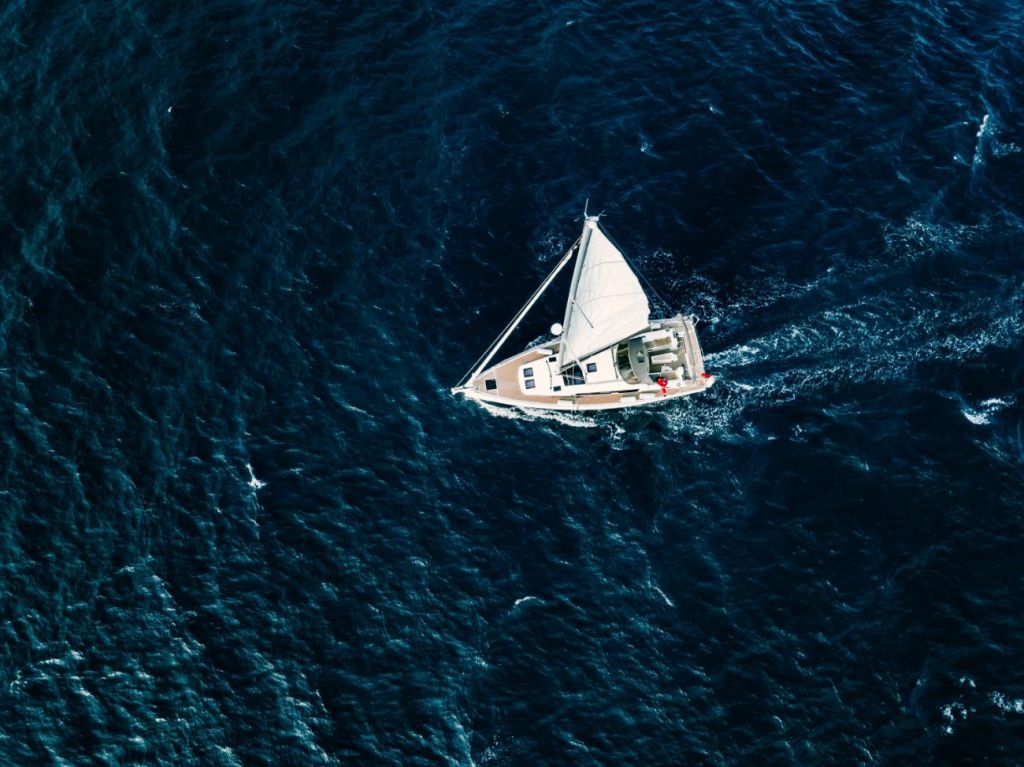
On this page:
How to choose a route for you, route for speed, the pleasure route, the traditional route, the arctic route, the dangerous route, the cheap route, the coast lover's route.
What route you will take depends on what kind of journey you are looking for. If the goal is to do it in the least amount of time possible, you will be choosing a different path than if you don't care about time and put emphasis on sightseeing.
Similarly, if safety and convenience are at the top of your priority list, you will choose a route that might differ greatly from that of a person ready to spend more on security and cut corners through tricky territories.
If you have specific locations in mind, you will take turns that are, logistically speaking, quite impractical, while if efficiency is what you want, there are certain places it would make little sense to visit.
And finally, if you are after comfort, you will avoid some bumpy places and times of the year, as opposed to somebody who won't mind venturing into the corners of the oceans that require a hell of a warm jacket.
There is no right or wrong answer here; don't feel some approaches are better than others. Just look at what you want from the journey, read through this article, and then choose what best suits you.
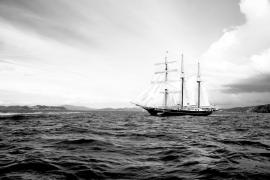
21 Places to Avoid Sailing Around the World (In Order)
Let's kick this off with a racing spirit. This is the route taken by those competing in Vendée Globe, a circumnavigation race. It takes a bit under three months...
...that is if you are a racer and so is your boat. If you are a cruiser kind of person, it will take more time, but the point is that this route is as straightforward as it gets.
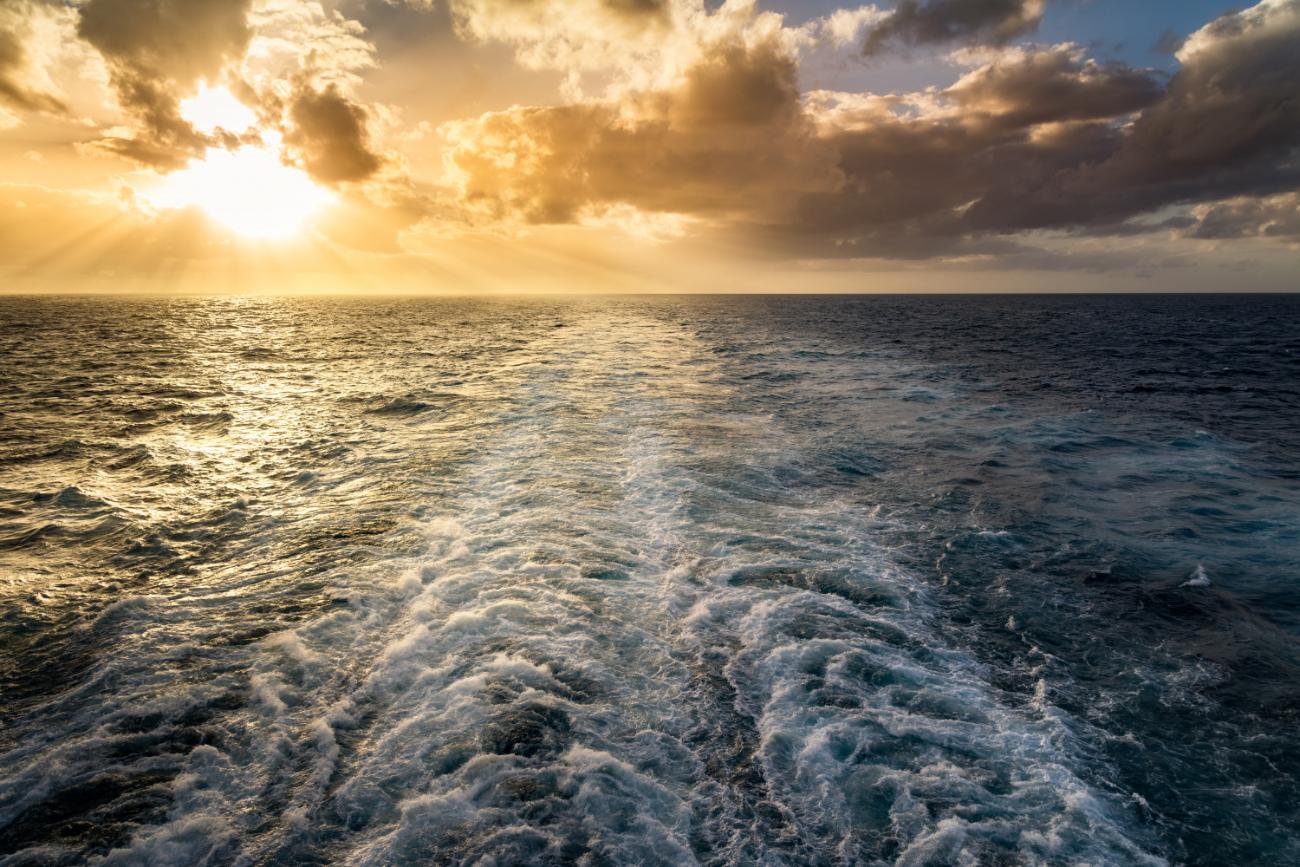
So what waypoints does it touch? Vendée globe racers start in France, then head down towards the Cape of Good Hope, circle Antarctica as close as the rules allow, and after getting to Cape Horn, head up to France again.
Of course, based on where you start from, your route might differ. But the idea is as follows:
- head south towards the Southern Ocean
- sail around Antarctica through the Southern Ocean
- after reaching the point where you met the Southern Ocean for the first time, head back up
The Southern Ocean is not a breeze, the cold waters mixing with the warmer ones coming from the north, plus the danger of icebergs, as well as the cold temperature, isn't how your typical holiday dream looks. That being said, it's up to you how close to Antarctica you will want to be when going around it.
This route doesn't touch down at any land, so you must be prepared for months on the sea as far as provisions, spares and mental capacity goes. Of course, this is variable, you can easily make landfall in Azores, South Africa, South Australia, or South America, and some of the South Pacific islands, if you need to. Either way, it is demanding logistically, so be sure to have your checklist in check .
It is among the most straightforward routes. Not just because it is probably the shortest one or the fastest one, but all the hassle with visas, check-ins, going through canals, and other lengthy land creatures' business will be foreign to you.
If you make it through the Southern Oceans unharmed, you will certainly have one hell of a story to tell.
Now let's go on the opposite side of the specter.
Let's suppose you theoretically have unlimited time. Instead of doing things quickly and efficiently, you want to take it at a leisurely pace while admiring all that there is to see.
This route will begin and end in the Mediterranean, but that's just because that's where I am based, sailing-wise. Wherever else you are, just pick the point of the route closest to you and begin there.
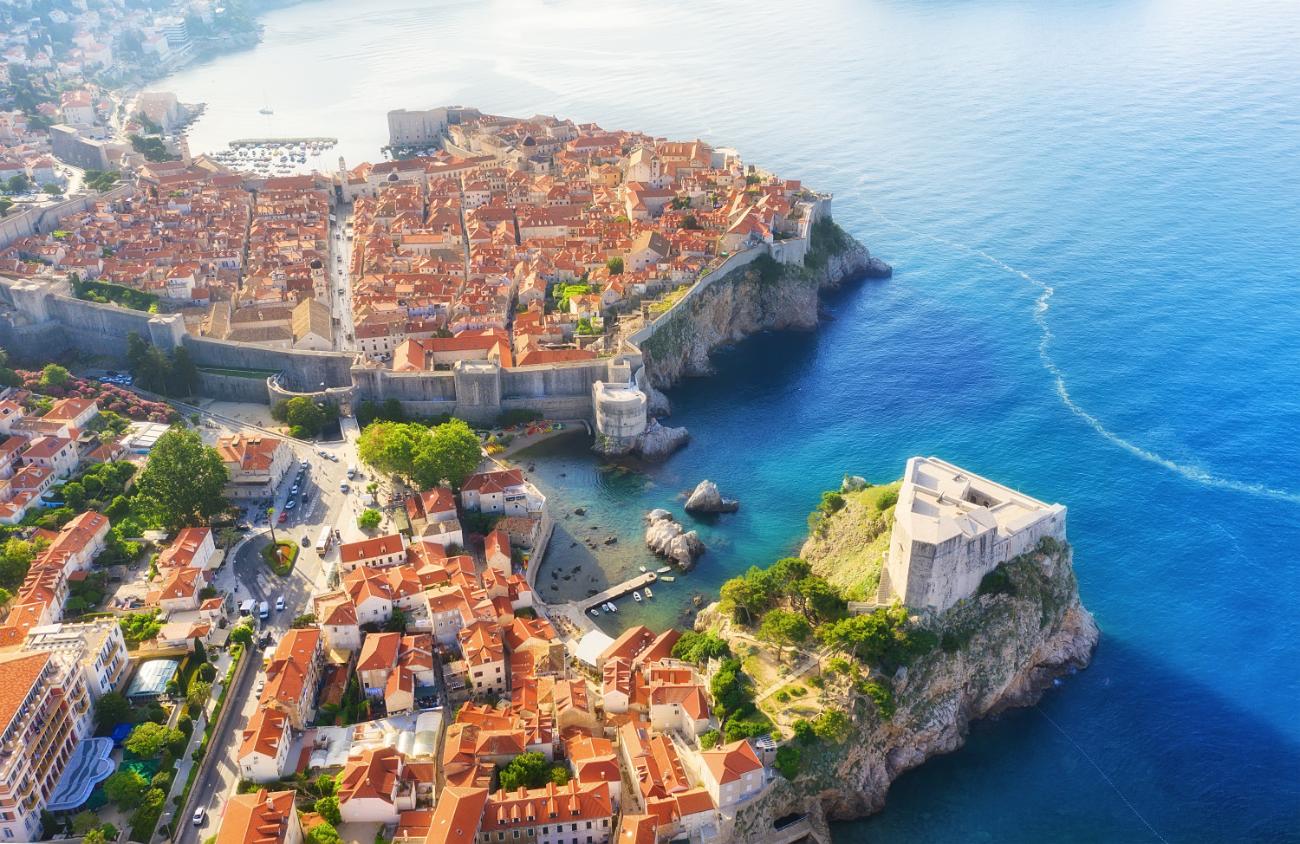
We will begin in Croatia, because it has beautiful shores and islands, travel around Greece with even more islands, the south around Italy, through Gibraltar. After that:
- head south to the Azores
- west to the Caribbean and through the Panama Canal
- west to Hawaii
- south to French Polynesia
- west to New Zealand, then Australia and Papua New Guinea
- northwest to Indonesia, Philippines, Vietnam, Thailand, India
- south to Madagascar, then along the African coast to Cape of Good Hope
- north to the Azores and then through Gibraltar back home
This route takes time since it aims to explore all it can even remotely touch. It's not just that the route is long, because the aim is to visit pretty places. You might also find yourself having to wait months at some places for the bad weather season to clear before you can make your next crossing. Have a look at our article about things to think about when planning for a long trip .
Because of that, this route is more demanding when it comes to planning, visa hassle, check-in research, more ports and anchors, more provisions planning. Also, your boat will need to be a solid liveaboard , since you will spend so much time on it. Logistically, it will be demanding.
But for all that hassle, you will literally get to see the world. You will visit many fantastic cultures, get to taste the cuisines from all over, and the long times waiting for the winds to calm down will be spent on exploring the place you are 'stuck' at.
What more does one need...
...except perhaps some middle ground. Now that we've been to two extremes, let's look at something in the middle: the route most commonly taken when circumnavigating.
It is rather similar to the Pleasure Route above except for skipping the Mediterranean, Pacific, and Southeast Asian stops.
Thus it goes as follows:
- From Europe, head south to the Azores
- west to Australia
- west to Cape of Good Hope
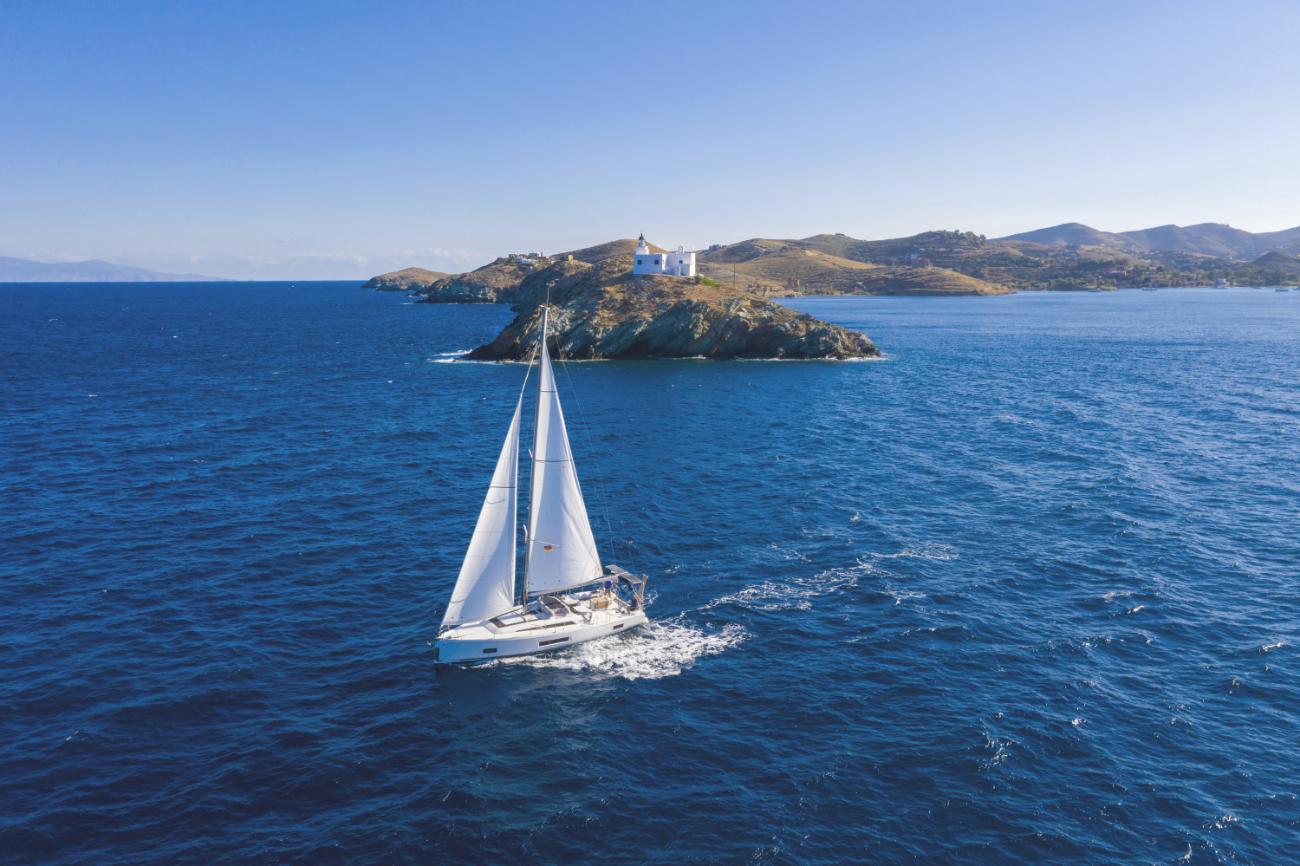
This route accomplishes the circumnavigation while stopping at beautiful places but doesn't necessarily explore everything that happens to be around. Its strong suit is the variability. If you like the Caribbean, you stop and cruise around there. If Australia excites you, you do the same there. If you want to see Madagascar, well, it will be almost on your way. And so on.
It has been a traditional route to take because it is relatively painless and does not go through any hazardous areas.
It has been traveled by many before you, so there is a lot of info floating around if you want to do your research on specific parts of the journey.
On its own, it has a lot of long legs where you will not see anything but the ocean on the horizon. So for those of you who mind this, you gotta make it your own, customize it a bit, so that you spend more time at places that you like.
This planning really is important. Some of those legs can't be made during certain seasons if you want to be careful, so to make sure you don't get stuck somewhere you don't particularly like, you should plan well.
With that, let's get crazier.
For those who want to do things the hard way. Perhaps you really like the scenery, perhaps you want to test yourself, or maybe you've done every other passage, and now it is time for the icy one.
There is a circumnavigation route that leads through regions so far up north you mostly don't encounter them even on a map. Because why would you look up there.
Now I don't know how long this article will survive on the internet, but note that this route is rather climatically contextual. Given enough time, it might freeze over and become unavailable.
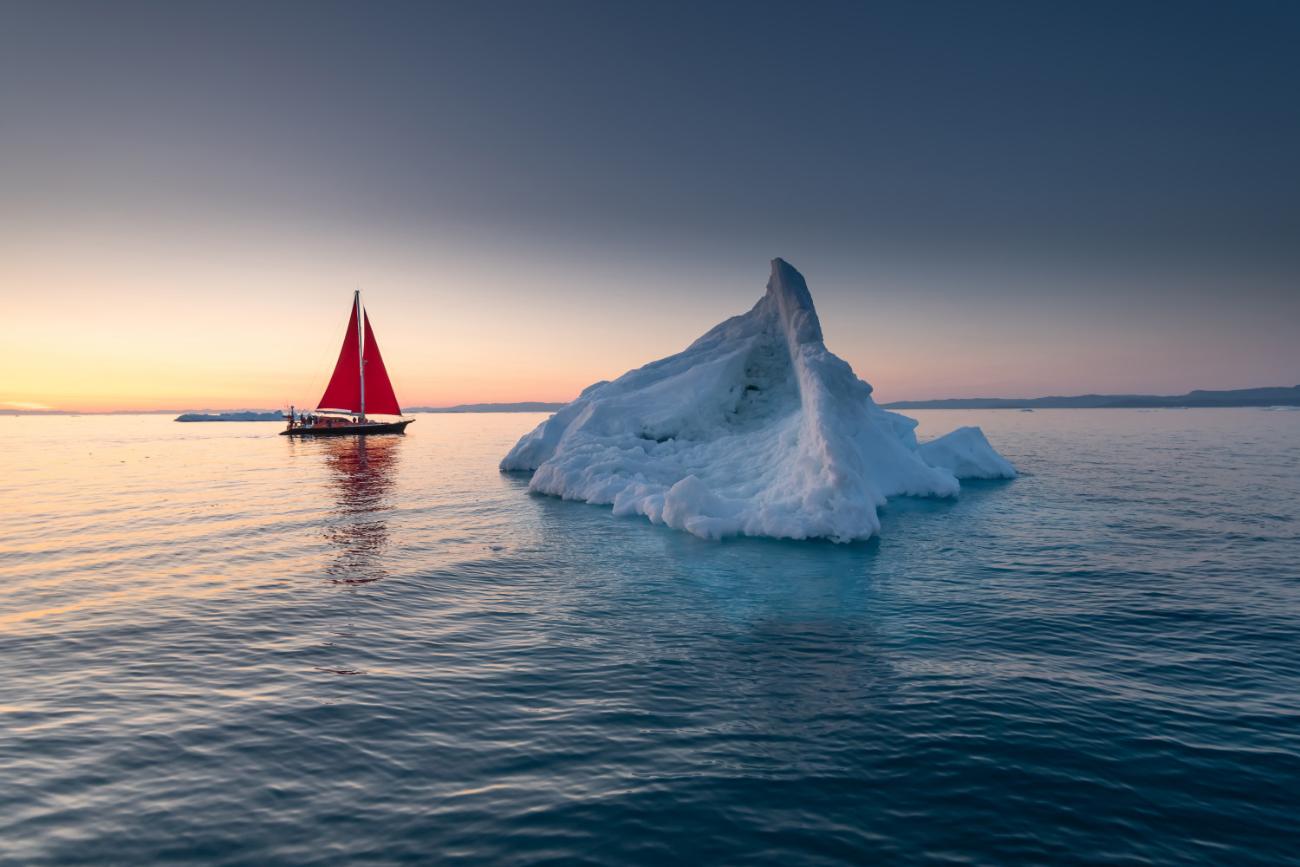
For me, it would begin in one of the northern ports of Norway and then:
- continue west to Iceland
- west to the south of Greenland and then up its western coast to the Baffin Bay
- south of Devon Island and through the archipelagos to Beaufort and Chuchki Seas
- west along the northern coast of Russia under the Lyakhovsky Islands
- west under the Yuzhny Island to the Barents Sea and back to the north of Norway
To this, you will have to add the most straightforward route north from wherever you are to any point on the route above.
Cold. Thus this requires clothing, equipment, and a boat that can withstand the polar temperatures along with chunks of ice floating around.
How much more adventurous can you get? Circumnavigation has been accomplished by plenty of people. This, not so much.
With the above, the major sailing routes have been covered. So what follows are mostly variations. Important ones, though.
Imagine this one mostly as the Traditional Route, except with a few twists. One of them leads through the Gulf of Aden, the Red Sea, and the Suez Canal.
Why take it? Because if you look on the map, you will see that when going from the general direction of Australia or Southeast Asia west, meaning you are probably aiming for the Azores or further for the Caribbean, it will save you a lot of time.
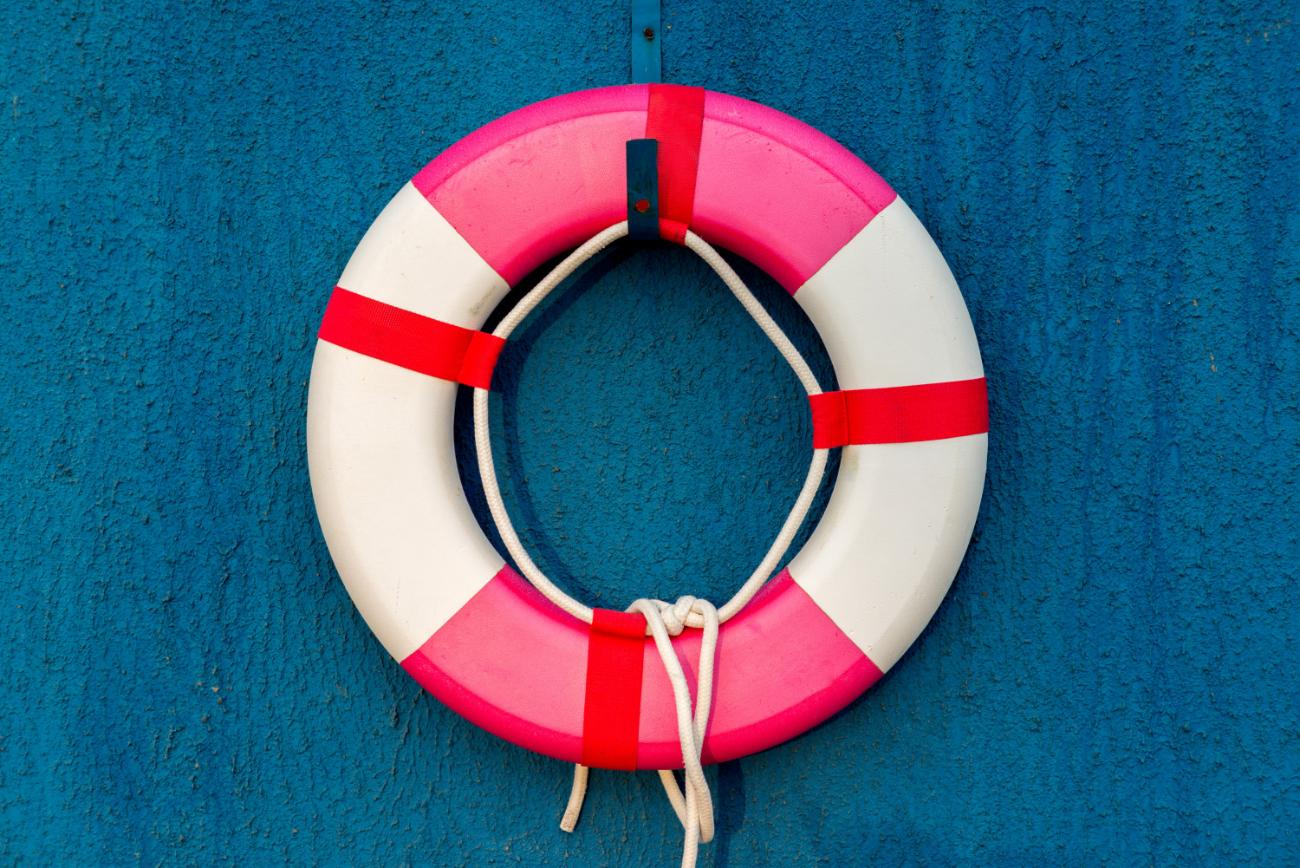
Money, not so much. You will have to pay for security. Because although you will save yourself the long southern route around the whole continent of Africa, which is nearly a 10,000-mile detour, you will have to go through the aforementioned areas that are famous for piracy and require professional armed company if you want to be on the safe side.
Not that it hasn't been done without it, but you know… Furthermore, many insurances won't cover you there since the risks are just too high.
Similarly, the area around Malaysia and the Philippines, which you might encounter during your Southeast Asia travels, bears the same story. No coverage by many insurances for piracy reasons.
Then again, exploring Southeast Asia while avoiding these regions means a few detours and no-go zones.
So if you want to explore the world on your sailboat and don't mind the risk, add these to your route plans.
Obviously, the risk or costs related to security. You will find plenty of sailors arguing that there is no real danger unless you are a cargo ship or a kidnapping worthy target. You will also find plenty who would rather travel in a fleet through there. And plenty who would never set sail towards those places.
Then there is the insurance issue.
With Suez, the upside is the saved time as well as not having to go around the treacherous South African cape waters.
With the Philippines and Malaysia, it's the convenience of being able to go wherever you want to in one of the most beautiful regions worldwide.
See this one as a variant of the Traditional Route and the Pleasure Route.
Some places are cheaper than others. And some places straight up make very little sense to go to.
Going through the Panama Canal is at least a $1,300 expense. Or, there are countries, like Ecuador, where check-in can cost you a $1,000 fee. And last but not least, prices of resources, like food, vary too. The Caribbean is famous for its steep prices in the provisions area.
The prices change, so it would not be bulletproof to give you a precise circumnavigation route exclusively through cheap places. Still, the moral of the story here is that when planning your route, do have a look at the local prices when it comes to check-ins and visas, food and various passes.
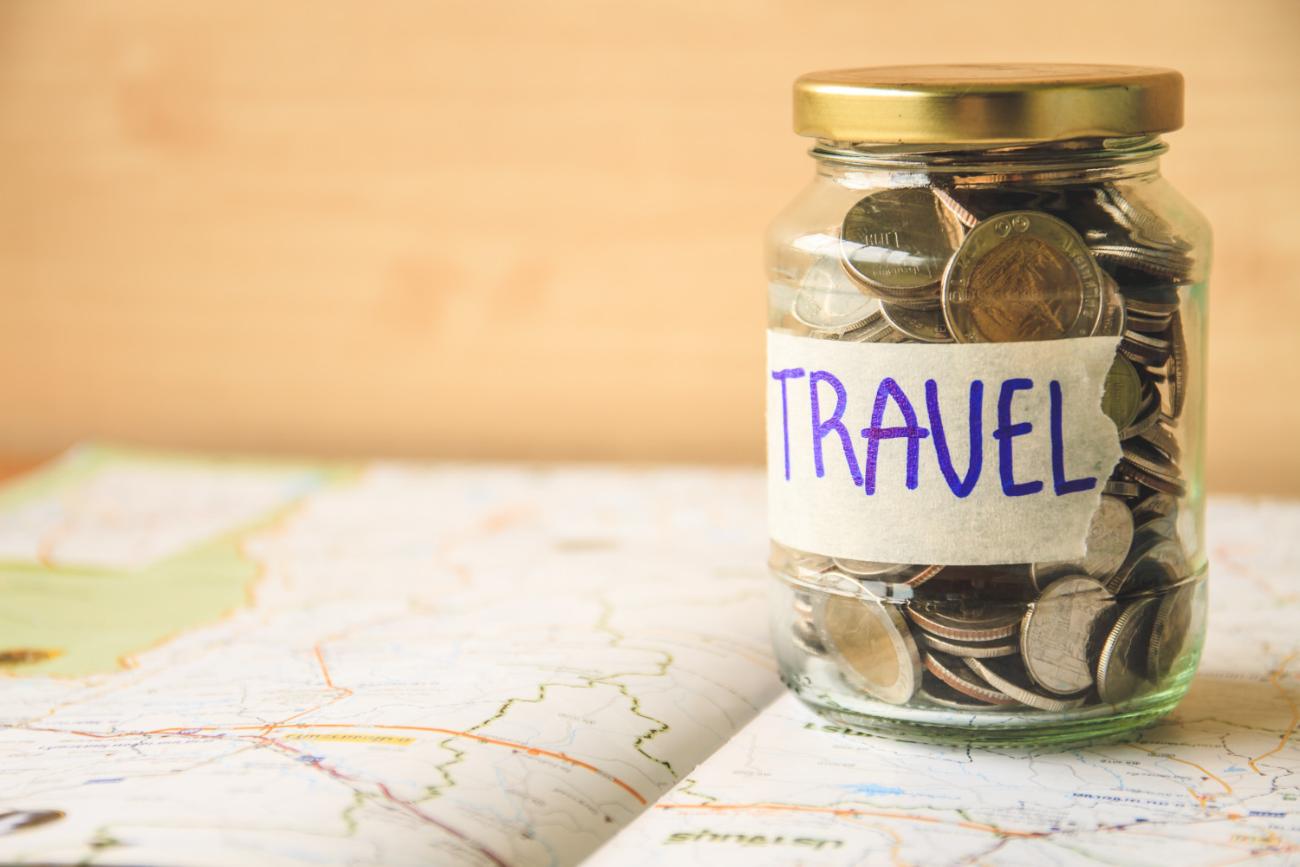
The result should be a route you are comfortable with financially. Avoiding the Panama Canal means a detour around the whole of South America, so it rarely pays off. Avoiding Ecuador, on the other hand, won't hinder your progress and save you money. Stocking up on food before getting into the Caribbean is also a sound logistical choice - unless you plan to stay for longer than your stocks can take you.
Saving money can mean detours, inaccessibility of various places, and more thought put into logistics. So it can result in a less elegant route.
On the other hand, being smart about it can result in a much lower bill overall.
Let me start this one by admitting that I don't believe anybody will actually take this route in its entirety, as delineated here. But it serves as an inspiration to those who are perhaps a bit unsure or simply like to combine two different sailing styles.
Some like to cross vast oceans and love to see nothing but the horizon for months. And then some like to stick to coastal waters for most of their journeys. Nothing wrong with that; at least it gives you something to look at any given moment.
And then there is the benefit of relative safety, a port or an anchorage close by most of the time, the ability to resupply whenever you like, to pick up and drop off people, and last but not least the lack of need for a really ocean-worthy boat and equipment.
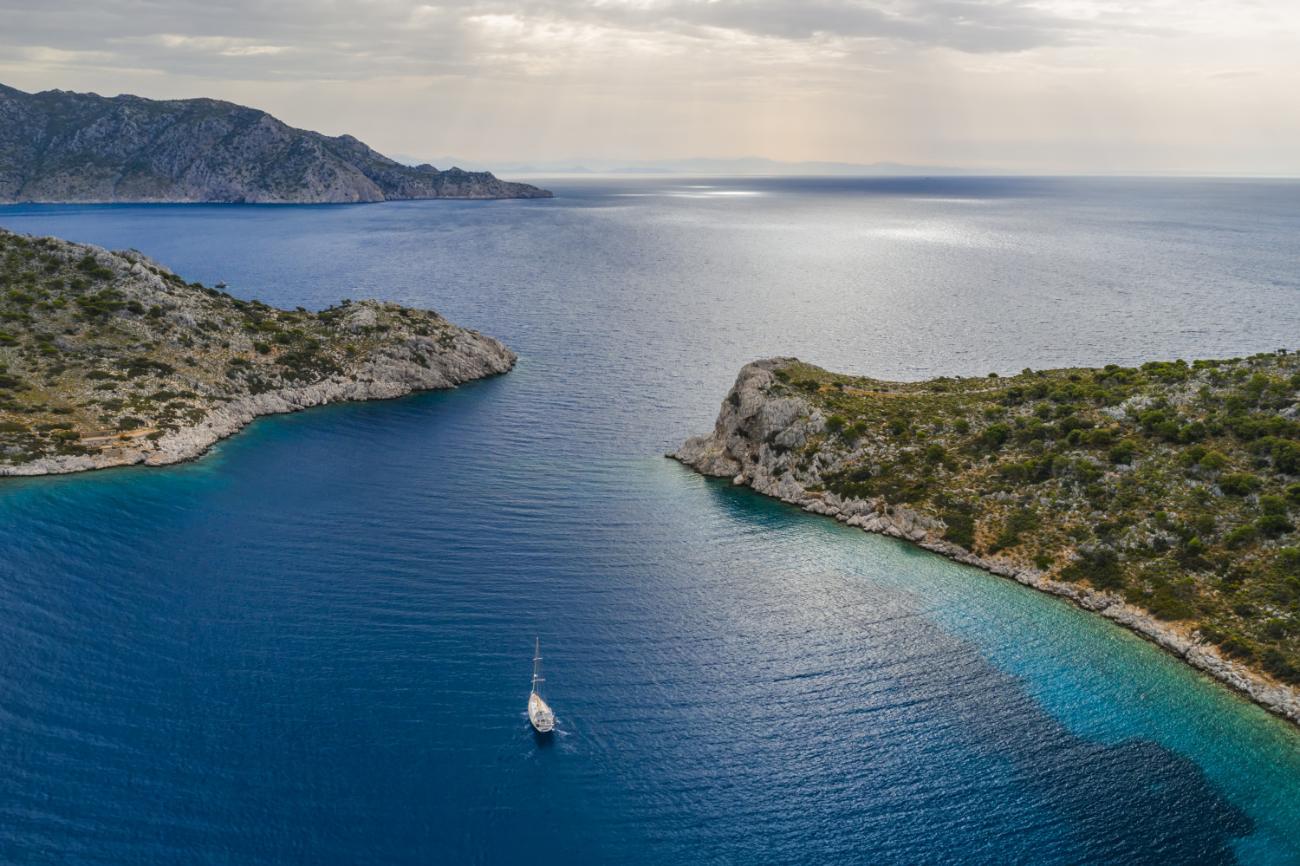
I'm talking about the coastal cruiser's dream of circling all the world's continents, whereby effectively circumnavigating the globe. Eventually. This is the longest route ever.
The idea is pretty simple. You can go around the world sticking to the coast with no crossings, except for the Norwegian Sea and a few short stretches in Southeast Asia.
Or, if you feel up to it (and want to avoid the freezing northern places), you can cross the Atlantic, the Pacific and keep close to the coasts otherwise.
As mentioned in the beginning, not many will actually take this entire route. But it is not uncommon for circumnavigators to have weeks or months where they do exactly this - stick to the coast and enjoy the country.
Lots and lots of time and resources are needed.
You will constantly be checking into countries and solving visas.
Understand the required paperwork for sailing the world This is an article on the topic of check-ins and paperwork, so have a read through it Read up on global licenses
Some areas are arguably less hospitable than others - the coast of Yemen as an example. So you might want to skip a few.
You don't need a proper ocean exploring boat - an island-hopping model will suffice. Many of the modern ones are capable of long crossings if needed here and there.
You don't need as much equipment as power, water, food, and all that jazz will be available most of the time.
The logistics will suddenly become a whole lot easier. Fewer provisions planning, less spare parts planning, broken stuff won't be a disaster… you get the point.
This is the true world tour.
I liked your article; it raised a lot of good points. I think the article could have benefitted from some maps.
I also think that, throughout the article, you have confused the Canary Islands or Madeira with the Azores. The Azores are not south from Gibraltor or France or Europe. They are 1/3 the way across the Atlantic Ocean, almost due west from Lisbon. The Canaries are south from Gilbrator, France and Europe and most people turn west there for the Caribbean.
Again, I liked the article.
Best wishes.
Leave a comment
You may also like, 41 sailboat cruising essentials for long trips.
In this post I list the items you are unlikely to have if you have never done bluewater or long-term cruising before. There are some essential safety product and …
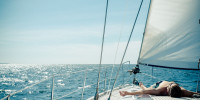
Everything You Need to Sail Around the World (by an expert)
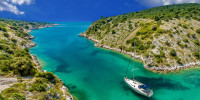
How Long Does it Take to Sail Around the World?
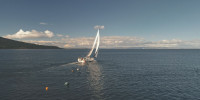
The Safest Sailing Routes Around the World (Which to Avoid)

How Big Should a Sailboat Be to Sail Around the World?

Berthon Winter Collection

Latest issue

August 2024
In the August 2024 issue of Yachting World magazine: News Few finish a tempestuous Round The Island Race European rules are eased for cruising to France and Greece Olympic sailing…

Yachting World
- Digital Edition

Sailing around the world: Cruising couples’ top tips for a dream voyage
- Helen Fretter
- June 19, 2019
Is sailing around the world with your partner the ultimate bluewater dream? Helen Fretter meets World ARC couples who’ve done just that

Who would you pick as your round-the-world cruising companion? Photo: Tor Johnson
If you could choose anyone to go on a grand adventure with, would it be your life partner? For many couples that’s the ideal.
But what if you don’t have the same level of experience, or one of you isn’t confident to co-skipper? Perhaps you plan to take friends and family with you. But what happens if those plans change halfway round? I talked to World ARC crews near the finish of their circumnavigation to find out how different couples had answered those unknowns over their round the world voyage.
Over the 2017, 2018 and 2019 World ARC rallies (the round-the-world rally organised by World Cruising Club) around 20-30% of yachts set off double-handed. But by the time the fleet reached Tonga or Fiji that proportion had risen to about 50%.

Ruud and Laurie Bosman recruited crew from within the ARC rally after deciding to complete their world voyage
Grenada was a homecoming celebration for the World ARC fleet. While St Lucia marked the end of the 2018-19 rally, Grenada signalled the fleet’s return to the Caribbean. A full circumnavigation for most, 438 days sailing for those who’d completed it in a single World ARC loop.
Some 38 yachts started in St Lucia in January 2018, 16 were gathered in Grenada this March. Some had started in 2017 – or even earlier – but peeled off to linger in the Pacific or return to normal life for a while, then hooked into the 2018 rally on its way past. Others had diverted to explore New Zealand, Ascension Island, or another outpost, before rejoining their fleet.
No matter how they’d done it, all had sailed some 30,000 miles, crossed the Pacific , Indian and Atlantic Oceans, and lived at anchor for months on end.
With very few exceptions, most of the boats belonged to couples taking on their first trip sailing around the world. Some had sailed the entire voyage jointly, on others one partner had flown home for a stage or two. Some had taken crew from day one, others had switched between double-handing and sailing with more aboard. Several started with one plan, and finished with a very different set up indeed.
Article continues below…
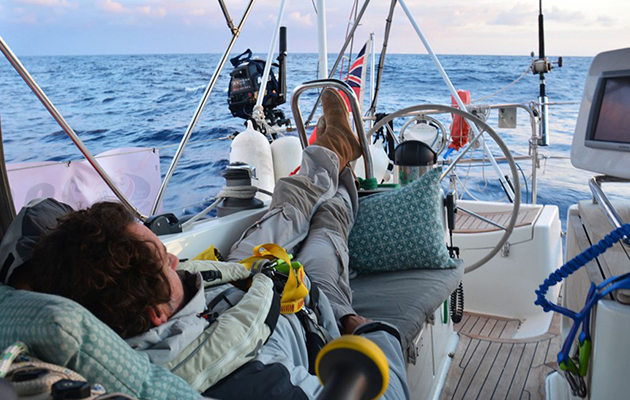
How much does it cost to sail around the world? The real costs of liveaboard cruising
Two years ago my partner Nick and I set off from the UK to fulfill our dream of sailing around…

Onboard creature comforts: Little luxuries for sailing around the world
Cruising sailors who also call their boat their home usually give plenty of consideration to making life on board as…
Personal space
One such couple was David and Wendy Tipton. A former farmer from Staffordshire, UK, David had built up a recycling business that he sold, enabling them to buy Mischief , a Jeanneau Sun Odyssey 479, and sail around the world. There was only one problem: Wendy hated the water and considered herself an inexperienced sailor.
Before they set off on the 2017 ARC transatlantic, Wendy had to learn to swim before she could even do a sea survival course. “It was never my dream to circumnavigate, it was David’s. So I went along with it, but it was totally out of my comfort zone,” she recalls.
Wendy’s initial condition of agreeing to do the World ARC was that they would take a crew to sail Mischief with them. They sent a round robin email to friends and sailing contacts to see who wanted to join them, and garnered an enthusiastic response, with many signing up for different legs. One was a very experienced sailor who sailed with the Tiptons for the first six months, which Wendy says gave her a lot of confidence.

David and Wendy Tipton began their World ARC with crew, but later switched to sailing two-up. Photo: James Mitchell
But 15 months is a long time to share your home, with up to six aboard at times, and Wendy admits having no personal space nearly drove her to breaking point. “I did have my bags packed to go home at one point. I was so fed up. It was nothing to do with the sailing, I was just sick of people.
“We were at the stage of needing down time on our own. It’s very intense – I didn’t appreciate how intense the whole trip would be. You wouldn’t have people living with you for six or seven months, and things that wouldn’t normally irritate you become irritating. For my own sanity I needed some time on our own.”
They decided instead to sail on double-handed from South Africa, and arrived in St Helena bowled over by how smoothly it had gone. “It was an absolute revelation,” David recalls. “The watches worked well, the boat worked well, and we were just asking ourselves why have we not done that before?”

The World ARC can include stop-offs for shoreside adventures including a South African safari. Photo: Haley Haltom
Before switching to sailing double-handed Wendy had sought advice from other crews on the ARC, many of whom had become close friends. She particularly asked the women for honest opinions, and says that they were overwhelmingly positive – with the obvious caveat that it could be more tiring sharing the sailing between just two.
They began their first double-handed passage with David sleeping in the cockpit during his off watches, “just in case she needed me quickly,” he recalls. “But after a few days of that regime she said, ‘You might as well go down below, I’m fine.’”
But things didn’t go so well on one of the next stages, from Cabedelo, Brazil, to Devil’s Island, French Guiana. “It was a bit of a catalogue of events,” he explains. “Our radar stopped working, so we were not able to monitor squalls.
“We had another boat who was monitoring them for us, but one came through that went from 7 to 35 knots and we had a spinnaker up in the dark. It broke the spinnaker halyard, the spinnaker went round the keel, the helm wouldn’t come off autopilot so we broached, an outhaul and a batten in the main broke.”

The Bay of Islands in Fiji’s Lau Group. Photo: Haley Haltom
Dealing with such a litany of problems between just the two of them was unknown territory, but Wendy says that while the situation did scare her, they were able to calmly work through and solve each issue.
“What the World ARC has given us – not just from the easy passages, but from the difficult passages – is the confidence that you could throw most stuff at us and we’d be OK,” David added. When they received the Division A 1st prize for the leg to Grenada, sailors across the fleet voiced their pride in Wendy for the progress she’d made.
Another couple that decided they were better off completing the rally two-up were Dan and Agnes Long from Florida on Smoke & Roses . Dan, a former firefighter, and Agnes, a former florist – hence the boat name – ran their Leopard 47 as a charter boat before the World ARC and were experienced sailing in home waters, both holding US Captain’s licences.

Setting off on the Lagoon 47 Smoke & Roses
Like many, they began their World ARC with trusted friends, and were also joined by their adult daughter for stages. But they later took on an unknown crewmember who had been recommended to them.
“She way overstated her sailing experience,” Dan recalls. “She could not trim sails, and she’d argue with you about it.” The final straw for Dan was waking up to find them sailing 90° off course. When he challenged the crew on deck she replied: “Because it’s faster.”
Fearful that they would run aground or make some other catastrophic error, Dan found himself supervising every watch – defeating the point of having a third person aboard. “So instead of being up for my shift, I’m up for my shift and her shift. But with Agnes [on watch] I’ll sleep through the night because I trust her.”
Having sailed two-up for some of the shorter legs around the Society Islands, the Longs also decided to go double-handed from Cape Town and found themselves easily handling the longer distances, setting a spinnaker for three days straight and covering 200-plus miles a day.
Bringing in reserves
For other couples taking on crew turned out to be a positive switch. Peter and Anissa Pappas, from Wyoming, USA, had never sailed any overnight passages with just themselves aboard their Amel Super Maramu 2000 Callisto before signing up to the rally. Anissa describes herself as a very inexperienced sailor, but they sailed from Grenada to Cape Town double-handed.
Their Amel is set up for single-handed sailing, with push button controls from a protected centre cockpit. The duo sailed conservatively, never over-canvassed. “And we set radar guard zones and cross-track error in case our autopilot started wandering around,” explains Peter. But Anissa still found night watches hard.

Night watches can be a long and lonely experience
“I was always worried if we were going to hit somebody. I never felt totally comfortable with that. I always felt that if something is going to happen, it’s going to happen on my watch.” She says she would frequently wake her husband for a second opinion.
But when one crewmember who had been sailing on another boat found himself without a berth for the leg from Cape Town, the Pappas’s made a snap decision to invite him to join them.
“We’d said no on countless occasions to taking other crew,” recalls Anissa. “It’s been hard [going two-up], especially hard on my husband because everything falls to him. But for us transitioning to crew has been easy, and our new crew has been the easiest person.”
With an extra hand they were soon able to carry more sail area, enjoying having the 52ft ketch flying along under four or five sails, including two spinnakers and a staysail.

The start of the 2018 World ARC Leg 16 heading out of St Helena
“With hindsight, I think we should have started out with crew,” admits Anissa. “Peter and I had not really been on the boat together for enough time to really get all the sails up and learn what we needed to learn. And later maybe – or even maybe not – we would have downsized.
“Two was tough, but we did it. But for couples I would say keep an extremely open mind about bringing crew aboard.”
Roving crew
While the Pappas’s made a sudden decision to take a third hand along, the 2018-19 World ARC was characterised by an unusually high number of crew who joined to sail one boat, and ended up becoming such a fixture of the rally community that they extended their trip by joining others.
Several of the roving crew had sailed on three or four different yachts by the time they reached Grenada. Karen Slater, a former fire service worker from the UK, was a very popular member of the ARC family and was about to join her sixth boat for the final cruise to St Lucia.

Freediving with whale sharks in Namibia. Photo Haley Haltom
Having a floating pool of experienced crew became an invaluable resource for some boats. American retirees Ruud and Laurie Bosman on the Hylas 54 Blue Pearl had originally only planned to sail the first half of the rally.
“But by the time we were in Australia Ruud felt very strongly that he wanted to complete the circumnavigation and do it all at once, and I felt very strongly that I did not want to cross the Indian Ocean,” recalls Laurie.
Both aged 71, the pair never wanted to sail double-handed and had organised crew for the Pacific legs, but no further. “Because we had never planned to do the whole circumnavigation we had made no plans beyond French Polynesia,” Ruud explains.

The unspoilt beauty of the Marquesas. Photo: Haley Haltom
When Laurie returned home to spend a few weeks with family, they invited other ARC crew aboard, some staying for the entire second half of the circumnavigation.
“It’s been quite easy, you are relatively familiar with the people because they have been in the fleet. They have a bit of a reputation, and importantly you know why they’re leaving boats,” he adds.
There are still no guarantees that an experienced ARC crewmember will be a good fit. Flashpoints were usually over domestic niggles like food preferences (several couples commented on how provisioning was much simpler with just two aboard, reducing one area of work).
Another issue for the boat-hopping crews was where their ‘home’ base was during stopovers. Peter Pappas commented: “It’s great having crew when you’re underway, but really when you get to your destination you assume they will get off the boat after a couple of days, so you and your wife can have some privacy, and have your home back.”
Many of the World ARC crew strategically took themselves away during long stopovers: diving in Australia, going on land tours, or even climbing Kilimanjaro during the fleet’s visit to South Africa.

Sharing the load
For those who did sail as a couple, how they divided the roles often reflected home life. Peter and Wendy on Mischief , and Dan and Agnes on Smoke & Roses , had both worked together so were used to spending extended periods of time with each other. Other couples, where one had spent much of the marriage putting in long hours at the office, had a bigger adjustment to make.

Mark and Helen Chatfield sailed Mad Monkey with their son Josh. Photo: James Mitchell
Some had chosen to time their world tour with natural breaks in their children’s education. Mark Chatfield on the Grand Soleil 56 Mad Monkey sailed with his wife Helen as well as his adult son Josh, timing it between Josh finishing school and starting university: “I worked as a sales director, with constant travel. So during the week, his schooling and upbringing, I didn’t see a lot of him – for me this trip was predominantly to get to know him better.”
The majority of boats divided roles along fairly traditional ‘pink and blue’ job lines when in port, with the women in charge of provisioning and domestics, the men in charge of repairs and systems. There were exceptions: on Misto British ex-pat Rosalind Cheetham skippered their Nautitech 443 and was hands-on with maintenance.
At sea the roles tended to shift slightly. Domestic jobs were more frequently shared underway, although the majority of ‘skippers in charge’ were the male partners.
Most couples ate an evening meal together before settling into some kind of night watch system, the most popular being a three or four hours on/off pattern, before reconvening for the 10am radio-net. Many adopted a much more fluid watch pattern during the day, each taking naps whenever needed. Several skippers took longer night watches than their partners, but would set alarms to allow 15-20 minute naps on open ocean legs.

Photo: YachtEmily Morgan.com
On Smoke & Roses Dan and Agnes changed their running rigging so reefs could be taken in and out from the cockpit. “It’s made life a lot easier for me because I was getting up for sail changes no matter who was on watch, every single time. Even with three people on the boat I was getting tired,” explains Dan.
They also modified their safety rules. “We did have a rule about not going out of the cockpit at night, but I was in the Pacific just to move the barber-hauler on the genoa,” recalls Agnes.
Several boats started out with conventional spinnakers and ordered furling Code Zero or asymmetric kites to replace them en route as they became more confident in sailing double-handed.

Suwarrow in the Cook Islands is one of the more remote destinations that the World ARC visited
A positive for many crews of joining a rally – and particularly reassuring for double-handed boats – was the option to ‘buddy boat’ for passages, particularly in areas of high traffic, where there were any concerns about piracy, or when one yacht had a technical issue. Even on the final ‘free cruising’ leg to St Lucia several yachts chose to sail in a loose flotilla to enjoy their friendships.
Experience of a lifetime
Every couple I spoke to emphasised that while the World ARC schedule was intense, and some stages had been very challenging, the rewards were hugely worth it.
“It’s been pretty incredible,” recalls Laurie Bosman from Blue Pearl . “Things like going through the Panama Canal, in your own boat – I get teary when I think about it. Those early mornings where you’ve got the sun rising and the moon setting, and nothing but you, water, sun and moon. You think you’ve died and gone to heaven.”

Swimming with manta rays at Suwarrow in the Cook Islands. Photo: Haley Haltom
“It changes you as a person,” said Wendy Tipton. “You have to improvise, shop for what you can get. We went home for Christmas and I was looking at all my bits and pieces and realised you don’t need it. I’ve been quite humbled by how people actually do live and how happy they are with so little.”
Her husband David added: “If you have the opportunity to do it, you’d be mad not to.”
Getting ready: Things to take or prep before you go
Downwind sails.
Many boats ordered new sails in Darwin, Australia, or South Africa – several of which did not clear customs in time to reach the yachts before they set off on the stage they were ordered for. The most popular were furling downwind sails.

Instruments and electrical systems
Multiple boats had issues with faults on one system triggering an issue on the other – an update to the MFD, for example, causing a fault on the SSB radio.
Bones Black, who runs the Bowman 57 charter yacht Emily Morgan with his wife, Anna, was widely praised across the fleet for helping troubleshoot and fix problems on almost every yacht. He suggests splitting systems to avoid interference.
“On Emily Morgan , all the comms runs down one side of the boat and all the power supplies run down the other side of the boat,” explains Black.
Likewise he advises against installing AIS and VHF using splitter boxes to share the same antenna: “I would always advise separate antenna, then if you have a problem you can always transfer over.”
Google Maps and Open CPN
Many boats used Open CPN to overlay chart data with satellite images from Google Maps, particularly in areas where charts alone were not reliably accurate, such as Fiji and the San Blas Islands.

Experienced bluewater cruisers Bones and Anna Black run charter yacht Emily Morgan and were a source of expertise for many rally participants
Anna Black, who skippers Emily Morgan , spent a lot of time preparing by looking at cruising blogs and other free resources, such as the Fiji Atlas for Mariners website and Noonsite. She also recommends Fastseas.com for affordable weather routeing.
Bones suggests taking digital and hard copies of the owner’s manual – and, if possible, an installation manual – for every system and piece of hardware on board.
Seagull water filter
Emily Morgan is set up with a double filter (coarse and carbon) of water going into the tanks, then drinking water is filtered a second time through the Seagull unit, so they can refill reusable drinking bottles from the taps.

Finding a quiet spot on Emily Morgan
Several boats had to replace dinghies or outboards in far-flung locations such as Fiji, due to being lost or simply coming apart after weeks of extreme heat and UV. The cost could easily be five times the equivalent price at home.
Washing machine
This was the most recommended ‘luxury’ item, mainly because it avoided wasting precious time in stopovers finding a laundry and dealing with missing items. If you can’t fit a machine, it seems prudent to make friends with a yacht that has one…
Cash savings
Some crews felt the costs had been surprising. Marina fees were higher than many had anticipated, and the social aspect of the rally made a few feel under pressure to eat out more.
David Tipton commented: “You need to know what this is going to cost you. We have a repairs budget of £5,000 every three months, but you only have to start doing a few jobs and that gets eaten up.
“We had a boat that was pretty much under warranty for the whole trip, but a lot aren’t. If you suddenly have a big ticket item, like putting a new engine or gearbox in, you’ve got to have £20-30,000 that you can put your hand on.”
Halyard breakages were commonplace. Bones found undiscovered sharp edges in the rigging had contributed to some halyard failures: “We also have independent blocks for our spinnakers, so as the boat and spinnaker moves the block moves.”
Adding Kevlar reinforced outer covers to halyards and sheets worked well on some yachts, others added padded protection to stop the main chafing on spreaders.
- Skip to primary navigation
- Skip to main content
- Skip to primary sidebar
- Skip to footer
Yacht Cruising Lifestyle
Everything fun you can do from your yacht
Sailing Around The World – Planning For Global Circumnavigation
August 14, 2021 by Martin Parker Leave a Comment
There’s something about sailing around the world that captures the imagination and inspires. For some, it’s the reason for learning to sail in the first place. Others only start to think about global circumnavigation as their skills and experience grow. Regardless of what motivates you to circumnavigate, one thing remains true. For most, it will be the challenge of a lifetime.
But how do you start the process? For someone new to sailing, the prospect of circumnavigation can be truly daunting. With so much to think about and plan for, many get overwhelmed and abandon their dreams before they begin.
This brief article aims to get you thinking about the task of circumnavigation and what it takes to practically and successfully navigate the process, from start to finish.
What Constitutes a Global Circumnavigation?
The definition of circumnavigation is a matter of debate, but there are some defined rules regarding a nautical, wind-powered trip where racing is concerned. A basic description would be to follow a route that forms a great circle. The passage must be at least 21,600 nautical miles for racing, and you must cross the equator, starting and finishing in the same port.
A cruising circumnavigation will often take a route that covers a much greater distance, with multiple diversions to visit places of interest. So long as you meet the essential criteria stated above, it can be classed as a circumnavigation.
If you are in a hurry, the current world record is held by Francois Gabart. He completed an official circumnavigation in just 42 days, 16 hours, and 40 minutes in December 2017.
No Substitute for Experience When Sailing Around the World
Some people spend a lifetime planning their trip, while others have just thrown the basics together and departed. In both cases, some have been successful, and some have not. We are trying to point out that while your planning is a necessary task, it does not guarantee success. Our best advice? Don’t keep putting off your departure because you haven’t planned everything 100%.
Start with the basic, most important tasks, and get ready to learn as you go. After all, thinking on your feet will be a big part of your circumnavigation journey.
Solo Circumnavigation, or Go With a Crew?
Single-handed circumnavigation is perfectly possible. However, it’s a huge challenge that presents certain obstacles and dangers you could avoid with a crew. We highly recommend going with a crew for your first attempt, be it friends, family, or staff. The average time for cruising circumnavigation is around 18 months, although many people travel slowly over multiple years.
If none of your family and friends are keen, you can use websites like Ocean Crew Link to find crew. You could also consider joining another boat as part of a crew to complete your first journey.
How Long Will it Take to Circumnavigate the Globe?
This really is an open-ended question. How long you have might be a better question. If you’re in a hurry, the current world record is just under 43 days. For most of us, though, we’re circumnavigating to see more of the world at a leisurely pace.
On average, most complete their journey in approximately 18 months. Riley and Elayna from Sailing La Vagabonde started their trip in 2014 and are still going strong. They have even begun raising their young son on board during the journey. Theirs is a lifestyle choice that most won’t want, though. They even took a risky approach and started sailing around the world with little to no experience. It’s a route we wouldn’t recommend, but it shows that circumnavigation is possible – even for beginners.
In the end, your circumstances and endurance will determine how long you spend on your journey.
Is Sailing Around the World Dangerous?
If anyone tries to tell you that it’s not slightly dangerous to circumnavigate the globe, don’t believe them. Sailing thousands of miles from land, passing through inclement weather, and relying on yourself and your crew presents many challenges and at least some level of risk. With proper knowledge, planning, and execution, though, you should be able to navigate your way through safely. By correctly preparing for your journey, you’ll have a better understanding of the risks, allowing you to reduce or even eliminate certain dangers.
A good starting point is learning your basic sailing skills. These skills include setting your sails and trim, boat handling, and basic navigation, to name a few. Practicing emergency procedures also helps to set yourself up to manage emergency scenarios if they arise. Man-overboard scenarios, how to make a mayday or pan-pan call, having sufficient rescue equipment, and having excellent navigation skills will all help prepare you to make the best of a bad situation. There is a wealth of information and training available both online and through professional organizations, and we strongly recommend taking several training courses until you feel adequately prepared.
Choosing a Boat for Global Circumnavigation
When you consider that people have successfully traversed the oceans in a myriad of craft – including small rowing boats – perhaps the type of boat you choose is not the most critical factor. It’s true that with help, you can cross oceans in almost anything, but the less suitable the boat, the more challenging, uncomfortable, and dangerous it will ultimately be.
The range of boats available may seem baffling, but the standard for making significant passages are the cruising bluewater style yachts. Our recent article on bluewater sailboats for under $100,000 offers insight into some well-known, competent, and affordable cruising yachts .
Vessel Considerations For Sailing Around the World
- Size: Yacht size affects many different aspects of sailing. Since you’ll be spending a lot of time onboard, having the extra space of a 40-foot yacht or bigger will undoubtedly come in handy. In this yacht category, you’ll also get a good sail area to cater to the varying conditions you’ll encounter.
- Weight: Although a heavy yacht won’t break any speed records, it will keep you steady when the sea conditions are challenging. Strong winds can become challenging in the open ocean, and having a heavy-displacement vessel will help you keep your course.
- Keel Design: Fin keels are very popular, and they’re featured on many modern boat designs. However, carefully consider where you intend to go. A bilge keel, for example, gives you a lower draught so you can visit more shallow waterways and will allow you to moor in areas where the tide will leave you aground. Additional benefits include easier maintenance when aground and reduced roll for added comfort.
- Sailing Winches: There are pros and cons to electric and manual winches, but hand winches make sense on circumnavigation passages from a practical point of view. Electric winches save you effort and help if you are sailing short-handed, but they need an efficient power source. Manual winches are more straightforward and less likely to cause you trouble.
What Gear Do You Need for Sailing Around the World?
There is some sailing gear that is essential for safely navigating a circumnavigation. While this list is far from exhaustive, your boat should be equipped with the following:
- Life Jackets: This should go without saying, but it’s amazing how many don’t consider it essential. Ending up in the water thousands of miles from land is scary enough, but it could very well be a death sentence without a buoyancy device.
- Lifeline: Prevention is better than a fix, so attaching yourself to the boat by a lifeline should be common sense when conditions call for it.
- Ocean Liferaft: Inside should be an equipment and ration pack that will last longer than 24 hours.
- Emergency Position Indicating Radio Beacon (EPIRB): An EPIRB is a device that automatically begins transmitting a rescue signal as soon as it’s submerged in water.
- Battery Charging System: You will spend most of your time sailing during a circumnavigation. Running your engine to charge your batteries will not last long, and it’s also not advisable. Install at least one method, but preferably two or more, that can charge your batteries under sail. Solar panels, wind turbines, and towed impellors give you three different options for power, depending on the conditions.
- SSB Radio: A Single Side Band (SSB) radio is a commonly used maritime communication system in the open ocean and remote parts of the world. Although AM radios are also widely used, SSB radios offer much better reliability and performance.
- Pactor Modem: Connecting your SSB to a modem will allow you to send and receive emails nearly anywhere at sea.
- Flare Pack: Flare packs are used to signal distress to other boats or rescue services, and having them on board could potentially save your life.
Other Items to Consider for Sailing Around the World:
- AIS Transponder: Safe navigation at sea, particularly at night, requires at least one pair of eyes to monitor the sea for natural obstacles and other ships. While using an AIS transponder does not remove this requirement, it gives you additional information to avoid collisions at sea.
- Satellite Phone: Keeping in contact with friends and family can be a lifeline that keeps you going in the most challenging times. A satellite phone will allow you to make direct calls from nearly anywhere on the ocean.
Natural Factors to Consider Before Global Circumnavigation
Your circumnavigation journey will cover more than 21,000 miles, and during that time, you will likely encounter everything mother nature can throw at you. Through good planning, though, you can choose to avoid the worst of the weather and take advantage of favorable winds and ocean currents.
Trade Winds
The trade winds blow continuously throughout the year, thanks to cold air at the poles and warm air at the equator. These temperature differences create westerly winds (from the west) at the poles and easterly winds around the equator.
Trade winds nearer the poles are much stronger than at the equator, and racers tend to take advantage of this – the passage will be colder and far less comfortable, though.
Cyclone and Hurricane Season
Cyclones and hurricanes occur mainly when the ocean water is warm. This happens between July and October in the northern hemisphere and between December and April in the southern hemisphere. Using this information, it’s a simple task to plan your passage, avoiding the main storm seasons. Of course, storms can still occur at any time in the year, so always be prepared for the unexpected.
Major Ocean Currents
In general, the ocean’s major currents follow the direction of the trade winds, but in some areas, such as South Africa, they can work against you. This makes following the trade winds even more appealing when sailing around the world.
Things To Do Before Sailing Around the World
Below, we outline some of the ways you should prepare before setting out on your first circumnavigation.
As we mentioned previously, some intrepid sailors have completed circumnavigations with no formal training and have learned while en route. While it is possible to do this, we wholeheartedly recommend you get some basic training before setting off.
Most sailing courses around the world offer certification that is acceptable in other countries. The Royal Yachting Association is the primary certification agency in the UK, and the US Sailing School is the leading agency in the US.
The most widely accepted certificate is the International Certificate of Competence for Operator of Pleasure Craft (ICC). Once you have your national license, you can apply for the ICC, which is accepted in virtually every country worldwide. Even if a country doesn’t accept the ICC, most charter companies will, allowing you to charter a yacht nearly anywhere.
A variety of insurance policies are available for sailors, but there will likely be clauses in the policy referring to piracy and storms. If you ignore the clauses and visit restricted areas, your insurance will not cover an incident.
Piracy refers to anything from abduction and murder to petty theft and assault. Depending on where you’re at in the world, you’ll need to be vigilant to combat potential downfalls.
The Philippines and the Suez Canal are two hotspots for more severe piracy, and your insurance likely will specify these areas as high risk.
Only you can assess the risk you are willing to take. Avoiding known problem areas can be beneficial, but incidents can still occur anywhere in the world.
Get the Right Sails For Your Route
Assuming you will follow a typical cruising circumnavigation route, you’ll spend most of your time downwind. Aside from the fact that many monohull sailors find continuous downwind sailing uncomfortable, you’ll need to kit out the sail locker appropriately. Spinnakers and screechers are the order of the day, along with standard genoa sizes or furling genoa.
Many countries require visas for transit through them, and depending on where you’re going, they could take weeks or even months to traverse. You need to plan carefully, as arriving in a country’s waters without the correct paperwork could prove troublesome.
Interested in joining a like-minded social circle? Get a conversation started on the new #BoatLife forum by leaving a question or comment today!
If you found this article helpful, please leave a comment below, share it on social media, and subscribe to our email list.
For direct questions and comments, shoot me an email at [email protected]
Sharing is caring!
Reader Interactions
Leave a reply cancel reply.
Your email address will not be published. Required fields are marked *
Save my name, email, and website in this browser for the next time I comment.
MB #20512 PO BOX 480 Sevenoaks Kent TN13 9JY
Tel: +44 56 0386 9163
Keep In Touch
Thank you for reading.
Join our online crew and find more about the #boatlife
RetireFearless
Best Sailboats For Circumnavigation
Circumnavigation is an undeniably enjoyable experience made even more fun with the right sailboats. Read on to find the best sailboats for circumnavigation!

October 17, 2023
This article may contain affiliate links where we earn a commission from qualifying purchases.
The best sailboats for circumnavigation include the Jeanneau Sun Odyssey 54DS, Neel 51, and Island Packet 349. These boats offer passengers a thoroughly enjoyable sailing experience and the reliability, efficiency, and luxury they need from a long-haul sailing vessel.
Circumnavigation is all about navigating the world oceans on a dream sailing trip across the world. The best high-performing sailboats can help circumnavigate the world with ease. They have the most reliable and functional facilities onboard, are easy to maneuver, have been fitted with the finest equipment, and have organized, spaced out deck and cabin areas for you to have a pleasant sailing experience.
Given the sheer volume of sailboats in the market, it’s not always easy to make the right decision for your sailing adventures. It’s why I have used my sailing expertise to create this list of the most reliable and high-performing sailboats ideal for sailing across the world!
Table of Contents
8 Best Sailboats for Circumnavigating the World
Here are eight of the finest sailboats for travelling around the world:
1. Jeanneau Sun Odyssey 54DS
Jeanneau Sun Odyssey 54DS is easily one of the finest and luxurious sailboats for circumnavigation. It’s a spacious and visually stunning vessel with large, swooping curves that give it its unique shape. When this sailboat debuted in 2003, its superstructure, with its quality desk hardware, was instantly recognized as one of the finest in the world, and that remains true today as well. Plus, the interior of the boat is designed with elegance in mind.
Moreover, this sailboat has a premium-quality, powerful build, which ensures that the Odyssey 54DS delivers top-quality, smooth performance, allowing you to travel in it around the world with ease. The 54DS has many notable features, including its standard in-mast furling mainsail and deep-draft keel. The vessel also comes with an optional full battened main.
The sailboat has a fancy leather-bound wheel that works smoothly and five to ten luxurious berths. It features a harbor cachet that is more or less the same size as the cachet of a custom yacht. All of its distinctive and contemporary features are designed to offer maximum comfort and a smooth sailing experience to long-distance travelers. It’s why the price of the sailboat is certainly a bit on the higher end. But the sheer quality and prowess of the boat make up for the higher price tag.
Here are some pros of the Jeanneau Sun Odyssey 54DS:
- Sturdy construction
- Reliable sailing experience
- Luxurious interior for added comfort
- Attractive design that makes it feel like a small superyacht
Here are some cons of the Jeanneau Sun Odyssey 54DS:
- Price is a bit steep
Neel 51 is a popular choice amongst sailboat lovers due to its wide deckhouse. Its double headsail rig is conveniently accessible from the helm and is controlled by Harken 52 winches. This blue water yacht was introduced after the success of Neel 45 and Neel 65.
This sailboat also houses two center-hull staterooms with functional showers below the deck. The trim of this popular yacht is made of alpi wood, and the flooring has a hard-wearing polyester substance construction. The sailboat enjoys an overall length of 51 feet and a width of 29 feet and 18 inches. The live-aboard space equals 90sqm, and the tender garage technical room covers 18 sqm.
With that said, the headsail hinders visibility from the helm, which is a common pain point with multihulls. With that said, you can enjoy an unobstructed view from the spacious and elegant lounge space adjacent to the helm for resting and relaxing. This boat is fitted with an impressive Volvo diesel inboard engine with an HP sail drive of 75.
This sailboat can also carry up to 600L of water and fuel. It offers exceptional directional prowess and is easy to drive. With this vessel, you can sail from 6-7 knits up to 10-11 knots. It’s the ideal boat for individuals who wish to experience the joys of circumnavigation in a comfortable sailboat.
Here are some pros of the Neel 51:
- Sturdy, durable construction
- Excellent functionality and a smooth ride
- Incredible directional power
- Comfortable, spacious, and luxurious
Here are some cons of the Neel 51:
- Visibility is obstructed from the helm
3. Island Packet 349
The Island Packet 349 is widely regarded as the best midsize cruiser under 38 feet. Even in poor weather conditions, it offers its passengers a comfortable and safe long-haul sailing and cruising experience. From its harken furlers and winches to its fiberglass work, the build quality is brilliant. The vessel sails wonderfully well as well.
This vessel is designed as a two-cabin boat and features a separate shower compartment in a single head, a distinctive feature in a boat under 38 feet. It comes with a functional set of furniture and appliances, including an under-counter storage space for dry goods, refrigerators, a pull-out spice rack cabinet, various bulkhead mounted handholds and SS overhead spaces.
The saloon of the sailboat also contains an L-shaped built-in sofa/settee and a dining table that can be folded when not in use to make more space for the passengers. The Island Packet 349 has an overall length and water length of a little more than 38 feet and 31 feet, respectively. The draft is 4 feet, and the beamwidth is 12 feet and 6 inches long.
The vessel can carry up to 100 gallons of water and 55 gallons of fuel. It houses a strong engine of Yanmar diesel with 45 HP, which allows it to travel a distance of 500 miles at six knots cruising speed. The IP 349 offers a nominal hull speed of around 7.5 knots, thanks to its 32-foot waterline. This model is safe for sea travel due to its ballast-to-displacement ratio of 39% and full keel, 20,000lbs displacement.
Here are some pros of the Island Packet 349:
- Durable fiberglass and harken construction
- Excellent utilization of space despite the small size
- Strong engine and traveling speed
- Comfortable vessel for sailing across the globe
Here are some cons of the Island Packet 349:
- It’s a bit on the small side compared to other sailboats on the list
4. Amel Super Maramu
Amel Super Maramu is a loved vessel designed by the Frenchman Henri Amel. He designed it with the vision of creating a high-performance circumnavigating sailboat, and it’s safe to say he succeeded. This sailboat provides exceptional performance in deeper sea waters and is all about functionality.
The sailboat has an undeniably traditional circumnavigating sailboat-like appearance. However, it has many modern features to offer. It’s designed to be operated by a small crew of two people to ensure increased efficiency. The ketch rig has a simple yet exceptionally effective design, and the sails are electrically controlled, making the boat super manageable.
With everything said, the Super Maramu is not designed for external modifications. It’s a 53-feet-long boat with an optimally functional exterior and interior. It has an overall width of a little over 41 feet and a beamwidth of 15 feet. The sailboat has a water capacity of 264 gallons and a fuel capacity of 158 gallons.
Here are some pros of the Amel Super Maramu:
- Super-efficient design with maximum focus on functionality
- It doesn’t require a huge crew; designed for a two-person crew
- Explicitly designed for long-distance sailing
- Safe, reliable, and powerful vessel
Here are some cons of the Amel Super Maramu:
- Not as luxurious as some of the other options on the list
- Best for an experienced crew due to the complexity of some features
5. Bavaria 42
Bavaria 42 is a mass-produced, popular boat designed for cross-ocean traveling. It’s a no-nonsense, comparatively priced, adaptable sailboat that offers great features for its affordable price. The deck features a fairly spacious sail area and a long waterline to ensure good performance. However, the vessel can be super heavy when the cruising essentials are stored onboard.
The cockpit of the boat is placed centrally to free up more space for the passengers. Below the deck, the interior is as functional and practical as needed. Depending on the model you choose, you will benefit from two to three comfortable seeping cabins that are functional. It’s a standard go-to cruiser for circumnavigation.
This sailboat offers an overall length of almost 43 feet and a beamwidth of 13 feet. Depending on the model you choose, you can avail a fuel capacity of 210L to 230L and a water capacity of 360L. You will also have six to eight functional berths. The engine has an HP of 55. All in all, it’s a well-built, practical vessel that will enable you to have a relaxing cruise around the world.
The forward visibility of the sailboat is excellent at the helm, and the wide cockpit offers an unmatched sense of security even when the boat is listing. Moreover, the Bavaria 42 responds exceptionally well to the touch of an experienced sailor.
Here are some pros of the Bavaria 42:
- Responsive, functional sailboat
- Practically built to offer excellent performance
- Excellent front view
- Sense of security due to the spacious cockpit
Here are some cons of the Bavaria 42:
- Quite heavy when the cruising essentials are stored onboard
6. Beneteau 57
Beneteau 57 is easily one of the finest, most high-end sailboats for circumnavigation. It’s designed to be a stylish, high-performing, reliable vessel that you can take on a cruise around the world. It’s a luxury sailboat through and through!
The vessel’s hull has a monohull design and offers quick performance and a sleek appearance. The cockpit is also placed centrally to maximize the space on the deck and keep the vessel’s interior neatly organized under the deck. It is a powerful sloop rig with an impressively constructed cockpit.
The facilities below the deck are modern, comfortable, and wholly impressive. They are also quite spacious since the vessel’s overall length is more than 50 feet. The beamwidth of the vessel is a little over 16 feet, and the overall width is 56 feet. Moreover, its engine has an impressive 160 HP, and the fuel tanks have a capacity of 400L. The sailboat can carry 22,000 kgs of dry weight.
The synthetic glittering Glass blue countertops in the head and the brilliant stainless steel gallery appliances add a luxurious touch to the Beneteau 57. The boat has the most comprehensive list of features out of all the Beneteau boats. Considering the fantastic build-quality and luxurious experience that the Beneteau 57 offers to its passengers, its price is impressively competitive.
Here are some pros of the Beneteau 57:
- High-end, luxurious vessel with a fantastic build quality
- It offers an enjoyable cruising experience
- Well-organized and functional deck and below deck spaces
- Stainless steel appliances
- Competitive price
- Impressive dry weight capacity
Here are some cons of the Beneteau 57:
- Not as efficient as some of the other options on the list
7. Hylas 54
Hylas 54 has a German Frers design that offers the vessel a brilliant balance between efficiency and performance. The vessel’s hull is built exceptionally well, ensuring the boat to be driven seamlessly. It’s so easy to sail the boat that achieving more than 200 miles per day is achievable. On the deck, the compact and efficient design is ideal for an experienced sailor.
One of the finest features of the Hylas 54 is its spaciousness below deck, which is ideal for long-haul sailing across the world. The flexible below deck interior allows you to customize the layout however you want. It also enables you to use the finish quality you want. It also comes with a raised saloon version, which adds to its flexibility.
Like other Hylas sailboats, the passengers are typically satisfied with this 54-feet-long vessel for cross-ocean sailing. It’s because this vessel is super easy to handle and makes a great all-rounder for circumnavigation. It offers you the freedom you need to traverse the world oceans in comfort and style.
Here are some pros of the Hylas 54:
- Excellent customization options
- Efficient, high-performing vessel
- Easy to sail across the ocean, achieving maximum speed
Here are some cons of the Hylas 54:
- A relatively smaller deck compared to other vessels on the list
8. Beneteau Oceanis 46.1
The Beneteau Oceanis 46.1 is one of the most popular Beneteau models. It features a stepped hull design and incorporates some of the most loved features of the previous models. It also offers increased performance, quality, and top-tier design.
Oceanis 46.1 has a deep lead-bulb keel and a tall mast, allowing the vessel to offer 28% more sail area than the previous Beneteau models. It also has a “first Line” edition that offers comfort and speed. This sailboat offers a functional and roomy cockpit and a spacious forward owner’s cabin. It enables you to sail luxuriously and comfortably.
The overall length and width of the vessel are 46 feet and 47 feet and 43 feet. The hull length is an impressive 45 feet. The sailboat features a Yanmar power engine with 57 HP. You can also go for the Yanmar diesel with 80 HP. This sailboat comes with five varied layouts – three cabins with two heads, three cabins with three heads, four cabins with two heads, four cabins with four heads, and five cabins with three heads.
This Beneteau model enables you to sail short-handed and empowers you to control the winches from aft. It also has a beautiful design; the below deck interior is covered with brushed light oak veneer. It also houses wide sunbeds with separate head and shower compartments. The vessel has large hull portholes that allow natural light into its saloon, making your experience more comfortable.
Here are some pros of the Beneteau Oceanis 46.1:
- Beautiful and spacious below deck space
- Multiple below deck options
- Excellent performance and efficiency
- Spacious vessel with a powerful engine
Here are some cons of the Beneteau Oceanis 46.1:
- Not as roomy as some of the other sailboats on the list
Which Sailboat is the Best for Circumnavigation?
With today’s varied options, sailing worldwide is an exciting prospect. After all, there are many luxurious, well-performing sailboats that can help you have a grand time sailing across world oceans. However, only the best sailboats can offer you the most pleasing sailing experience that goes without a hitch.
The finest boats for circumnavigation offer lightweight speed and have a spacious hull and deck area that offers a grand view. They are also equipped with the finest, most functional and luxurious features for your comfort on your sojourn. That said, the best sailboat for you will also depend on the route you’re taking and your specific needs.
For instance, if someone is looking for a luxurious, competitively priced vessel for their circumnavigation trip, they will likely choose a Beneteau 57 for its luxurious interior and high-end performance. However, if you’re more inclined toward efficiently performing sailboats designed to offer optimal functionality, you will be drawn toward the Bavaria 42.
But if you need an incredible all-around performer in the world of sailboats ideal for circumnavigation, you will likely choose the Jeanneau Sun Odyssey 54DS or the Island Packet 349. These sailboats offer exceptional functionality, luxury, and comfort. They are also reliable in poor weather conditions and offer you a smooth, quick, and efficient sailing experience.
Recent Articles

What Size Sailboat Can One Person Handle?

How To Tie A Sailboat To A Mooring Ball Ring

What Is The Ideal Wind Speed When Sailing?

How To Use a Sailboat Winch

Things You Need To Liveaboard a Sailboat

Types of Sailboat Keels
I'm Michael Moris. I've been sailing my whole life, and it has taken me to places I never imagined. From the Caribbean to Europe, from New Zealand to South America - there's nowhere that hasn't felt like home when you're on a boat!

Trending Articles

How Far Is Havana From Miami By Boat?

Yachting Vs Sailing

Who Is Sailing Doodles?
Subscribe To Our Newsletter
Thank you! You're signed up for our free newsletter!
Oops! Something went wrong while submitting the form
About Our Team
We are a publishing team of licensed Nursing Home Administrators, Nurses, Assisted Living Directors, Health Professionals, Gardeners, and individuals with vast experience with senior living and activities.

©2024 Retire Fearless. All rights reserved.
We can be reached via email at [email protected]
Retirefearless.com is a participant in the Amazon Services LLC Associates Program, an affiliate advertising program designed to provide a means for sites to earn advertising fees by advertising and linking to Amazon. This site also participates in other affiliate programs such as CJ, ClickBank and more, and is compensated for referring traffic and business to these companies.
Facebook Pinterest
Visit our Popular Forums
- Monohull Sailboats
- Multihull Sailboats
- Powered Boats
- General Sailing
- Antares Yachts
- Fountaine Pajot
- Lagoon Catamarans
Cruising Business
- Boat Classifieds
- General Classifieds
- Crew Positions
- Commercial Posts
- Vendor Spotlight
Life Aboard a Boat
- Provisioning: Food & Drink
- Families, Kids, & Pets Afloat
- Recreation, Entertainment, & Fun
- Boat Ownership & Making a Living
- Liveaboard's Forum
Seamanship, Navigation & Boat Handling
- Seamanship & Boat Handling
- Training, Licensing, & Certification
- Health, Safety, & Related Gear
- Rules of the Road, Regulations, & Red Tape
Engineering & Systems
- Const. / Maint. / Refit
- Product / Service Reviews
- Electronics: Comms / AV
- Electrical: Batts / Gen / Solar
- Lithium Power Systems
- Engines & Propulsion
- Propellers & Drive Systems
- Plumbing / Fixtures
- Deck Hdw: Rigging / Sails
- Aux. Equipment & Dinghy
- Anchoring & Mooring
Photo Categories
- Member Galleries
- Life Onboard
- Sailing in the Wind
- Power Boats
- Cruising Destinations
- Maint. & Boat Building
- Marine Life
- Scuba Diving & Divers
- General Photos
Recent Photos

Listing Categories
- African Cats
- view more »
- Crew Wanted
- Crew Available
- Enhance Your Account
- Meet the Mods
- Meet the Advisors
- Signup for The Daily Cruiser Email





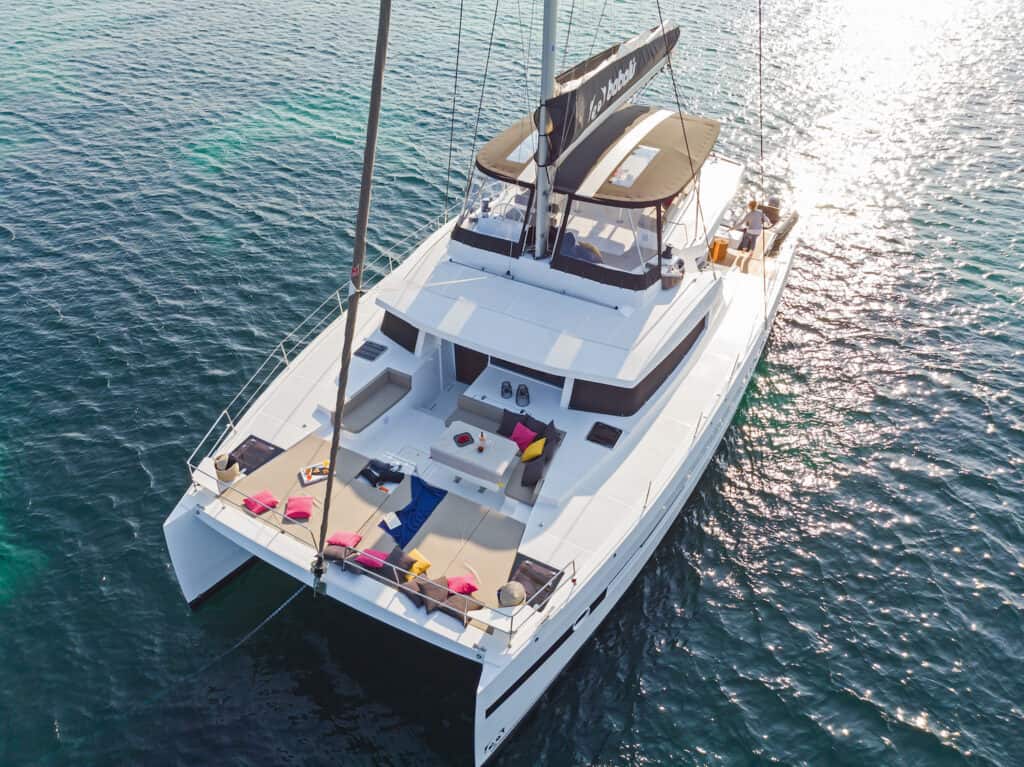

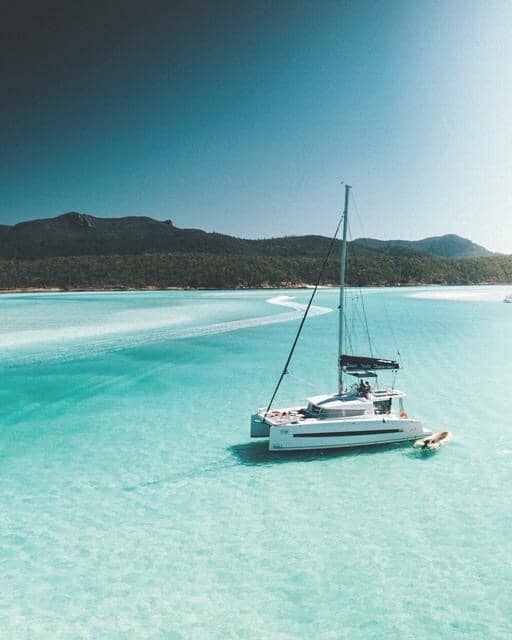


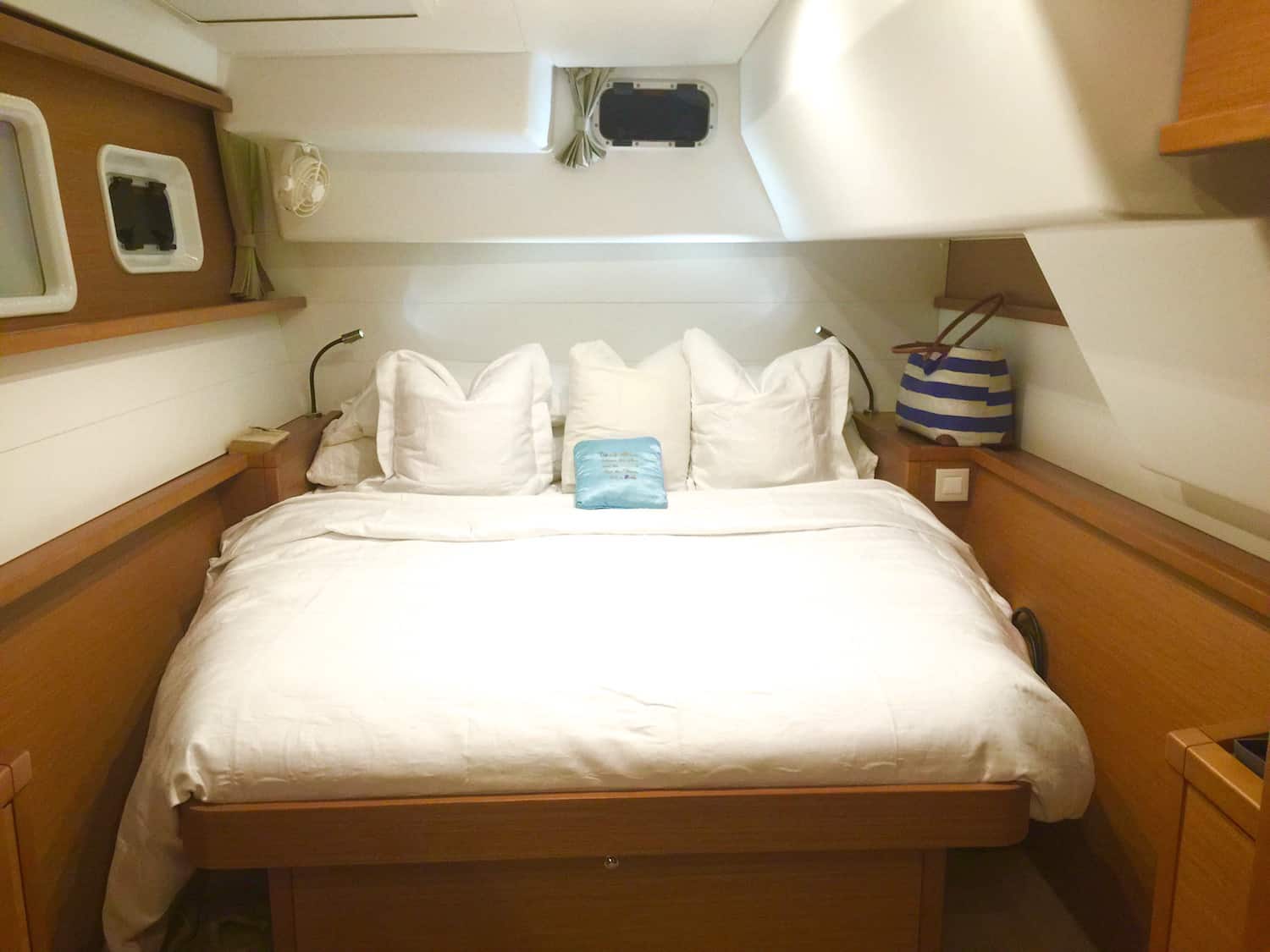


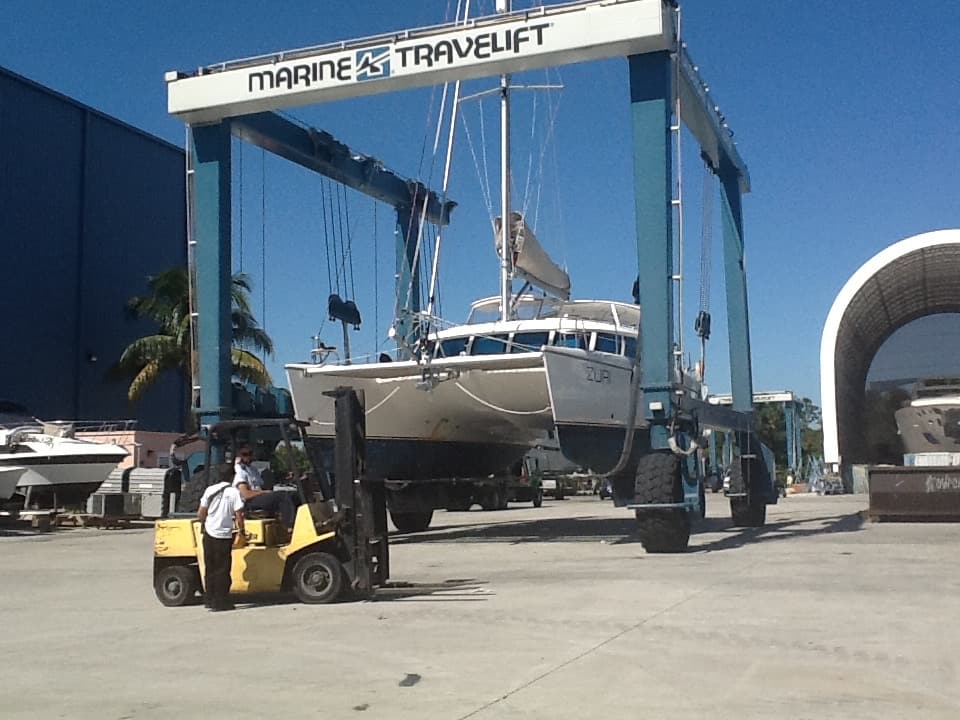


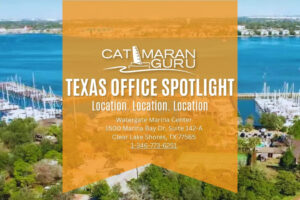
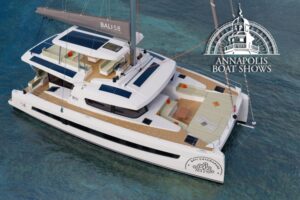




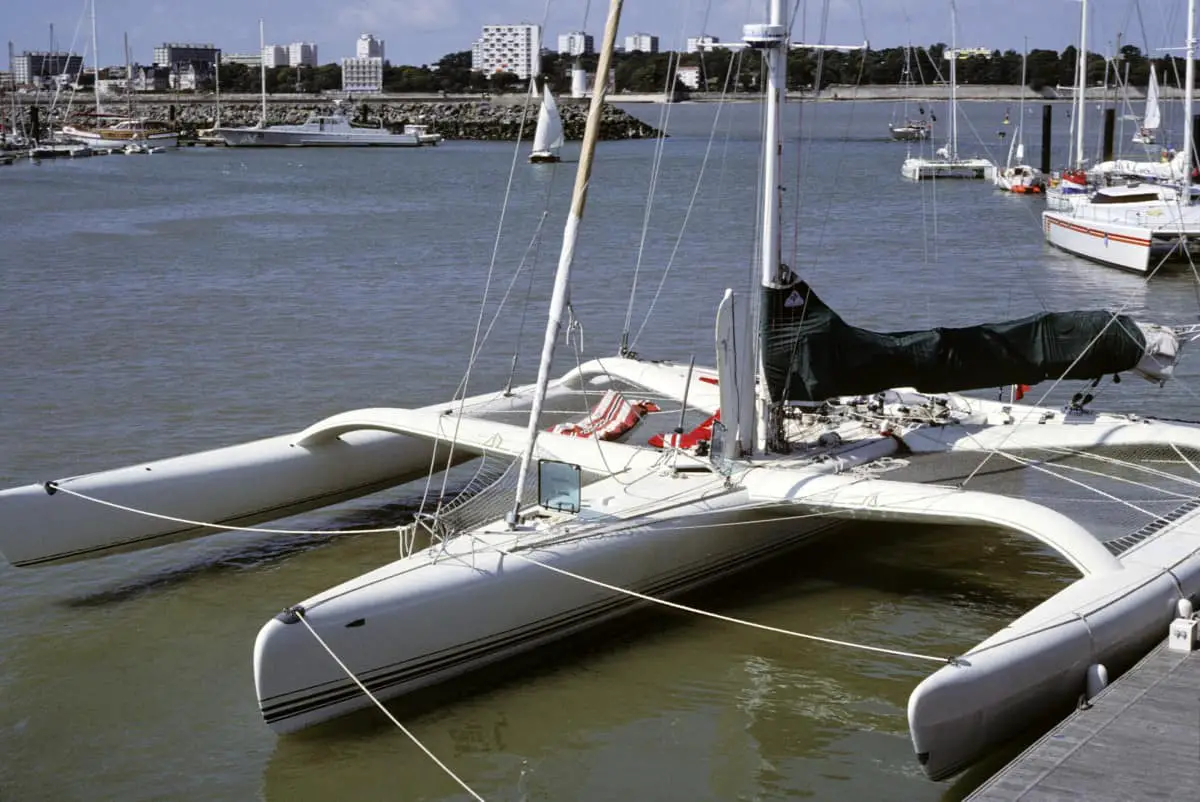

IMAGES
COMMENTS
The safest cruising catamarans offer a good beam to length ratio, sail fast, and are over 42ft. These include the Manta 42, the Lagoon 450F, and the Catana 44. They are stable, waterproof, easy to handle in stormy weather, and feature a sturdy design. When boarding a boat, you expect to get to your destination safely, and with your bluewater ...
Circumnavigation means to successfully navigate around any sort of landmasses such as an island or continent. What are the best sailboats for circumnavigation?
Yes, you can sail a catamaran around the world. In fact, full-size catamarans are some of the best circumnavigation sailboats on the market. They offer superior comfort, safety, storage space, and speed when compared to monohulls. Catamarans have become increasingly popular since the 1990s, and they're seen in ports all over the world.
The Best Catamarans for Sailing Around the World A catamaran is a double-hulled boat with a deck or cabin area in between (bluewater cat definition in this article ). The double hull design means that the boat rocks less, sits higher on the water, uses less fuel to sail, and can be sailed in shallower waters than a single-hulled boat without worrying about grounding.
Bluewater catamarans are popular for sailors who want to circumnavigate the world. They offer comfort, living space, and superior performance to most monohull sailboats. Here are some of the best long-distance cruising catamarans and why they're an excellent choice for many crews. | Best Catamaran for Sailing Around the World | #sailing #catamarans #boatlife
When boating folks talk about circumnavigating the globe, they generally think about doing so under sail. Don Richards and his wife, Anja, are currently making a circumnavigation in their Leopard 53 Powercat. We caught up with them in Tahiti as they prepared for the next leg of their journey.
A circumnavigation sailing trip on a catamaran : a 1,546-day adventure across 27 countries. The couple sailed their catamaran around the world for no less than 546 days, covering more than 34,140 nautical miles and 27 countries.
Toby Hodges and François Tregouet consider the best bluewater multihulls and look at the options for sailing the oceans in spacious comfort
By and large there are many examples of successful circumnavigation both on classic yachts and catamarans, only the question of trust and confidence in yourself and your boat remains.
World circumnavigation routes, like ours, usually have you dipping out of these storm zones for the season. It's a great time to haul your boat out for annual maintenance, like we did in New Zealand, Australia, and Thailand.
Enso's owners jumped into a circumnavigation with both feet, setting off immediately after taking delivery of their new 25 metre Oyster 825. You could say their shakedown cruise was the Oyster World Rally. For the wife, it was a jump into the deep end as her previous sailing experience amounted to a week in Sardinia.
Elcie is a 62-foot Custom Bluewater catamaran departing on an 18-month circumnavigation in November. Those interested in joining as expense-sharing expedition members on six- to 31-day legs can find information at Elcie Expedition's Facebook page.
Route planning is among the most crucial bits of preparation, especially when it comes to circumnavigation. This article will give you seven of the most commonly used routes for sailing around the world. Some routes have been sailed many times by many people, others are obscure or even dangerous.
Firstly I will introduce you to 8 ways of sailing around the world; then, I will show how to plan and execute a circumnavigation. There are 8 different ways to Sail around the world,
Grenada was a homecoming celebration for the World ARC fleet. While St Lucia marked the end of the 2018-19 rally, Grenada signalled the fleet's return to the Caribbean. A full circumnavigation ...
Sailing Around The World - Planning For Global Circumnavigation. There's something about sailing around the world that captures the imagination and inspires. For some, it's the reason for learning to sail in the first place. Others only start to think about global circumnavigation as their skills and experience grow.
Circumnavigation is an undeniably enjoyable experience made even more fun with the right sailboats. Read on to find the best sailboats for circumnavigation!
What size catamaran is needed for a circumnavigation ? I've read of the dangers of pitch polling in catamarans. From what I've read a circumnavigation shouldn't even be attempted in a boat under 40 ft.
Circumnavigation might conjure images of huge monohull ships, but can you make the trip in a catamaran? You can sail a catamaran around the world if the boat is equipped for offshore cruising and has a heavy load capacity. Modern catamarans are well-balanced and can be large enough for multiple crew and their supplies.
Hi, I wanted to pick your brains on what you considered the best catamaran for a circumnavigation and why? Special focus on quality to not have to repair the boat around the world. Cheers, Achim
Best catamaran for circumnavigation Jump to Latest 84K views 24 replies 18 participants last post by Gaelen Jun 5, 2013 F FreeSail Discussion starter 7 posts · Joined 2009 #1 · Jun 27, 2009 Hi there,
Catamaran vs. Monohull: We Changed, Should You? There are two schools of thought when it comes to monohull versus catamaran. We have done extensive cruising and lived aboard two monohulls and four catamarans over the past 25+ years. We experienced the good and the bad for both single hull and multihulls first hand. Quite honestly, the pluses for catamarans far outweigh the minuses. There are ...
Adventure Antigua - The Xtreme Circumnavigation. 518. Adventure Tours. from . C$264.09. per adult. Stingray City Experience Antigua - ONLY TICKET. 26. On the Water. from . C$108.28. per adult. ... Antigua Sunset Catamaran Cruise From St. John's. 15. Private and Luxury. from . C$168.13. per adult. Crystal Clear Kayak Drone Photography Antigua. 5 ...
In this article, I have created a list of the 16 best trimarans in the market and their unique features. You'll also learn the best options for different purposes such as circumnavigation, weekend sailing, racing, and more.
Choose from bareboat (monohull, catamaran), skippered charters, flotillas, Sail By The Cabin & schools. Company Overview With over 40 years in the yacht charter industry, Sunsail has everything you need for an extraordinary sailing vacation, whether it's your first time at the helm or your logbook's as thick as a dictionary.